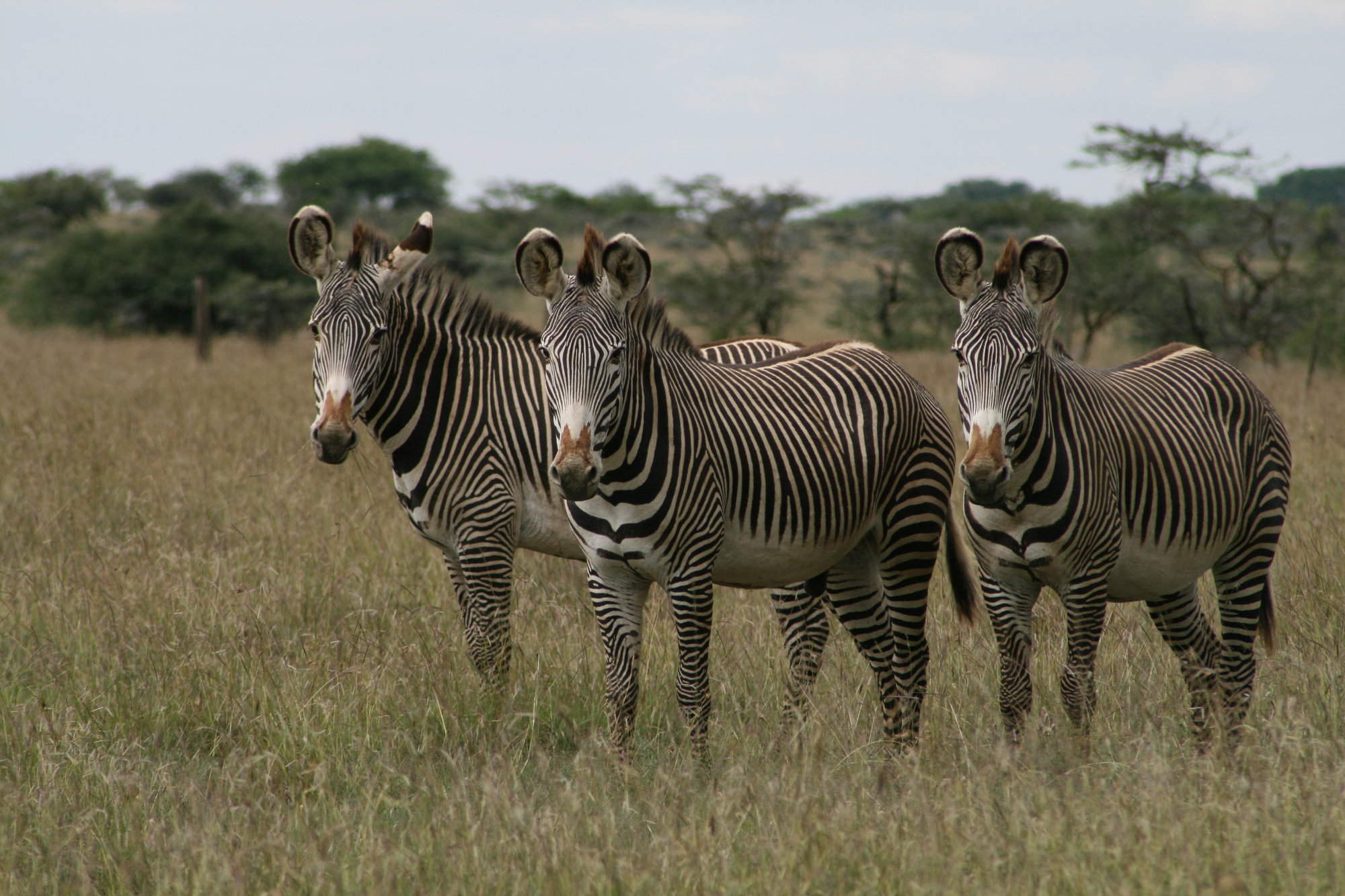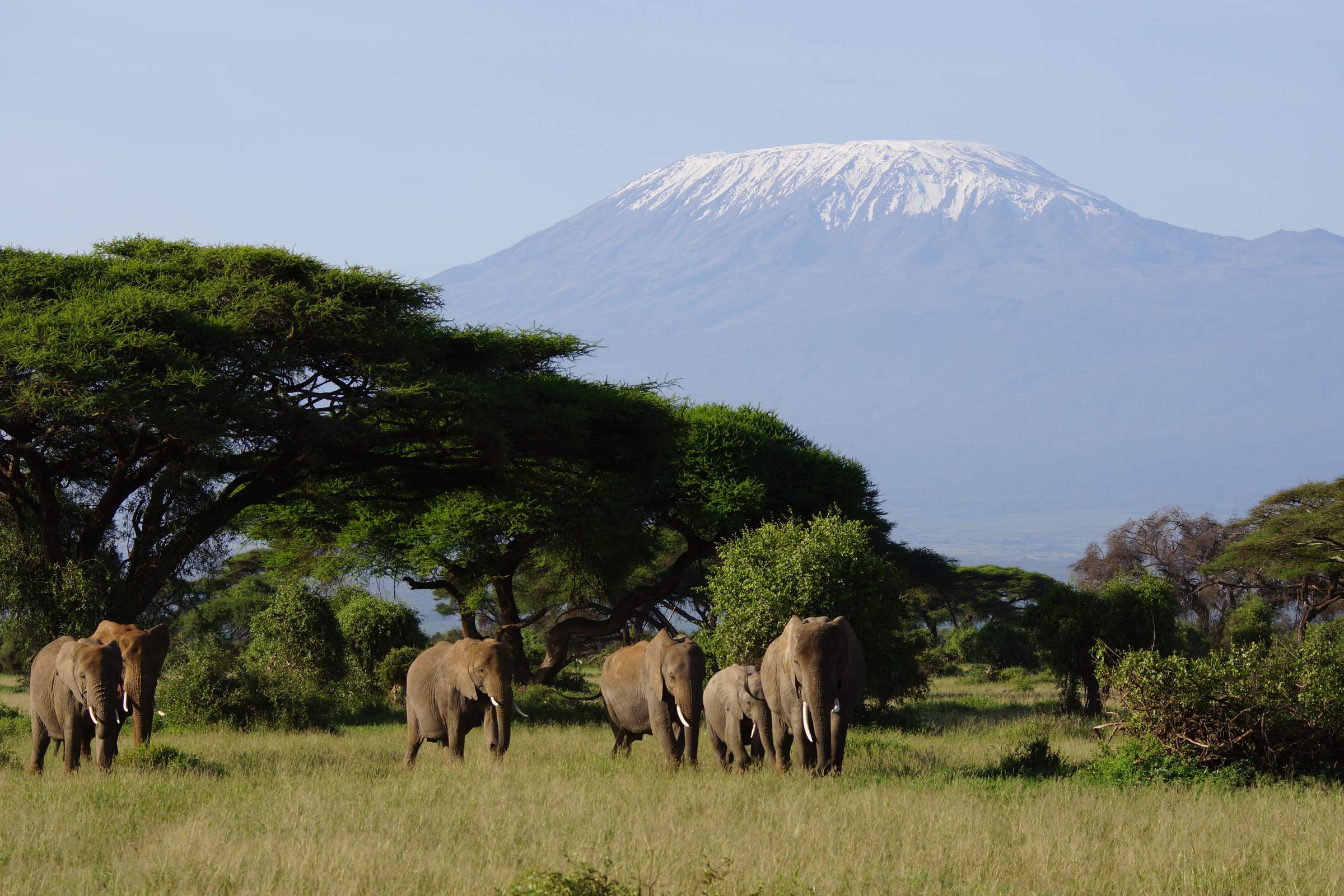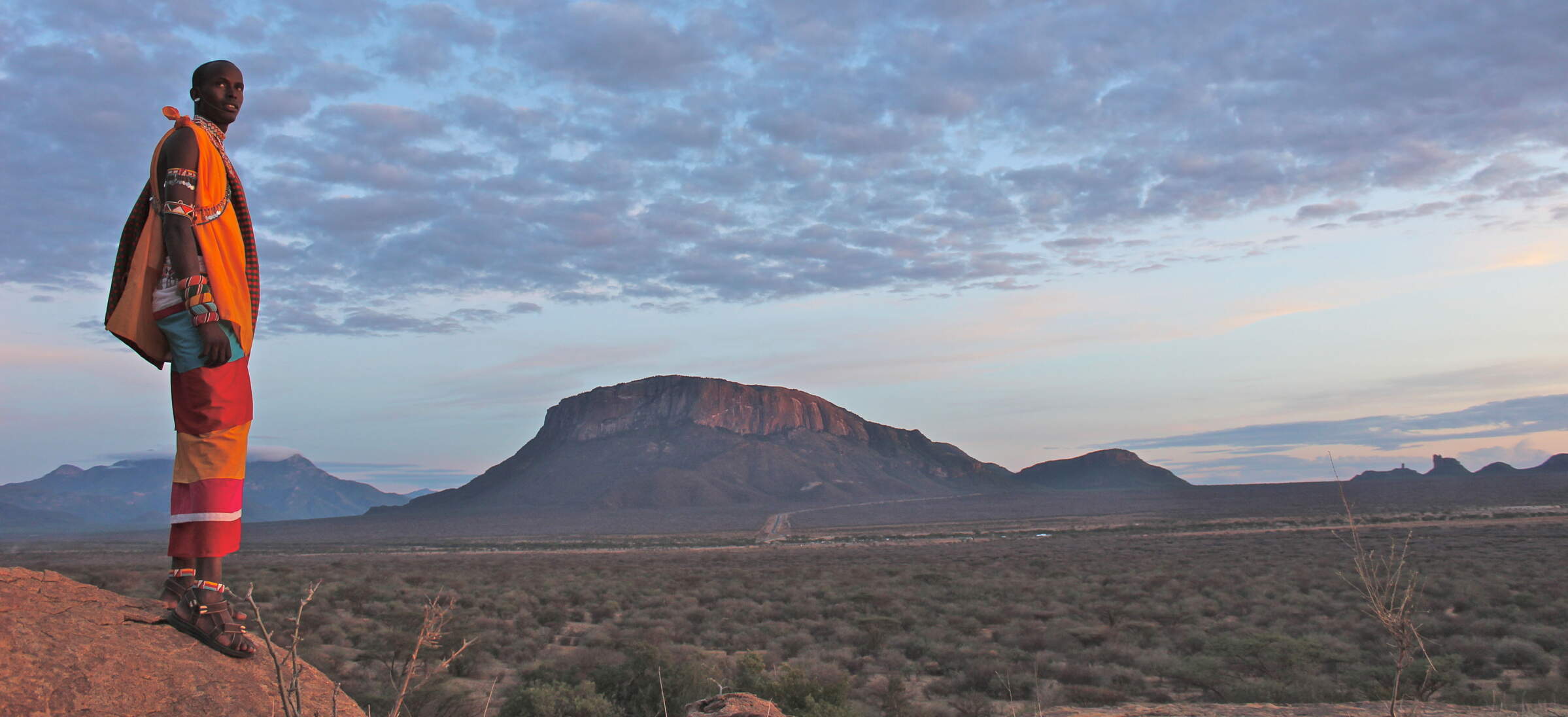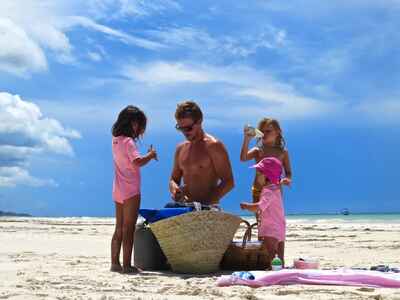
...and you get stunning views directly from your room.
There are a plenty of activities available, from snorkelling, diving and fishing...
...to wind-surfing.
Kenya Coast
Kenya Coast
Indented by mangrove-lined creeks and shaded by coconut palms, the coast blends the colours of the tropics with the sparkling blue Indian Ocean.
The Kenyan coast feels like a different world from the savannahs of safari country.
While being on safari can often feel like participating in an enjoyable group challenge, with its daily rhythm of game drives, bush meals and campfire anecdotes, a beach holiday releases you much more into the gentle embrace of local life. Once you’ve checked into your hotel, you’ll basically be left to your own devices – though there are plenty of activities to fill your days if you have the energy. From diving and snorkelling to city tours, shopping trips and cultural and historical excursions, these can all be organised from your hotel.
If you want to explore underwater, we’ll help you choose the right spots at the right time of year. If you want honeymoon privacy, stylish luxury, affordable comforts or a lively resort base, we’ve got the ideal hotels. And if you do want activities – whether it’s a visit to the old city of Mombasa or an extra helping of safari with a trip inland to the alluring Shimba Hills or Tsavo East National Park – we can safely say we’ve been there and done it, and we’re ready to give you the best advice available.
Most travellers use their beach stay simply to chill after several days on safari. But you can also do a further safari from the Kenya coast, or even use the coast as a base for your whole holiday, taking safari trips inland.

Where to stay on the Kenya coast
Absorbing as coastal culture can be, most visitors are here for the beaches, many of which can match tropical seashores almost anywhere in the world, with powdery fine sand, and sea that is safe and blissfully warm and can be crystal clear in the right season (see the "When to go" section).
Kenya’s coast is protected for nearly its entire length by a major fringing reef, which has created a broad, sheltered lagoon for most of its length, where the reef is anything from 50m to 1km from the shore.
Although many people refer to ‘Mombasa’ as if it were synonymous with the Kenyan coast, the country’s Indian Ocean coastline divides into a number of quite distinct regions. Mombasa island is the hub, with Watamu, Malindi and Lamu to the north, and Tiwi, Diani, Msambweni and Funzi island to the south.
Mombasa
The suburban district north of Mombasa has most of the Mombasa hotels used by charter package tours and overall feels a bit over-developed and hustly, though Nyali has some quieter corners.
Watamu Beach
Watamu has a small, traditional village, and there’s an excellent beach here and good diving and snorkelling, plus some wonderful excursions for wildlife and culture enthusiasts in the shape of the Arabuko-Sokoke National Park and the ruins of Gedi.
Malindi
The town is located just south of the mouth of the Sabaki River (which rises in the highlands as the Athi and flows through Tsavo East as the Galana) and is set back from the extensive sands of the town beach. Most Malindi beach hotels are located round the rocky headland of Vasco da Gama Point, a short way to the south, where the beach is prettier and the sea clearer.
Lamu
If the sense of being slightly adrift is deliciously relaxing (many visitors spend hours in a hammock with a book), there’s plenty to do if you’re feeling energetic, including all the water sports, snorkelling and diving, historical and cultural visits and even a new wildlife reserve on the mainland.
Tiwi Beach
One of the benefits is far fewer ‘beach boys’ (the generally innocuous, if often irritating hustlers who try to make a living from tourists), and there are some excellent snorkelling and diving spots.
Diani Beach, Galu Beach and Kinondo Beach
Back on the main coastal highway, and heading south, the further you go towards the Tanzanian border, the more rurally relaxed the coast becomes. Msambweni and Funzi, well off the main road, are real backwaters where beach boys and discos are unknown.
Msambweni
The whole area is thick with coconut palms and very traditional, while the largely deserted beach itself, a short, steep climb down the cliffs via steps or paths, is punctuated by crags of old coral rock poking through the pristine sands.
Funzi Island
You can fish, sail, take a canoe out for a private paddle through the mangroves or go on a boat trip up the Ramisi River, looking for crocodiles and water birds.
Holidays visiting Kenya Coast
Just ideas, we'll always tailor-make a trip for you

Kinondo Kwetu Beach Holiday
7 days • 1 locations
NAIROBI AIRPORT TO NAIROBI AIRPORT
Enjoy a ‘home away from home’ on a beautiful beach, where you will be exceptionally well looked after by a superb team. This holiday can be as relaxed or as action-packed as you like.
US$4,140 - US$5,540 per person
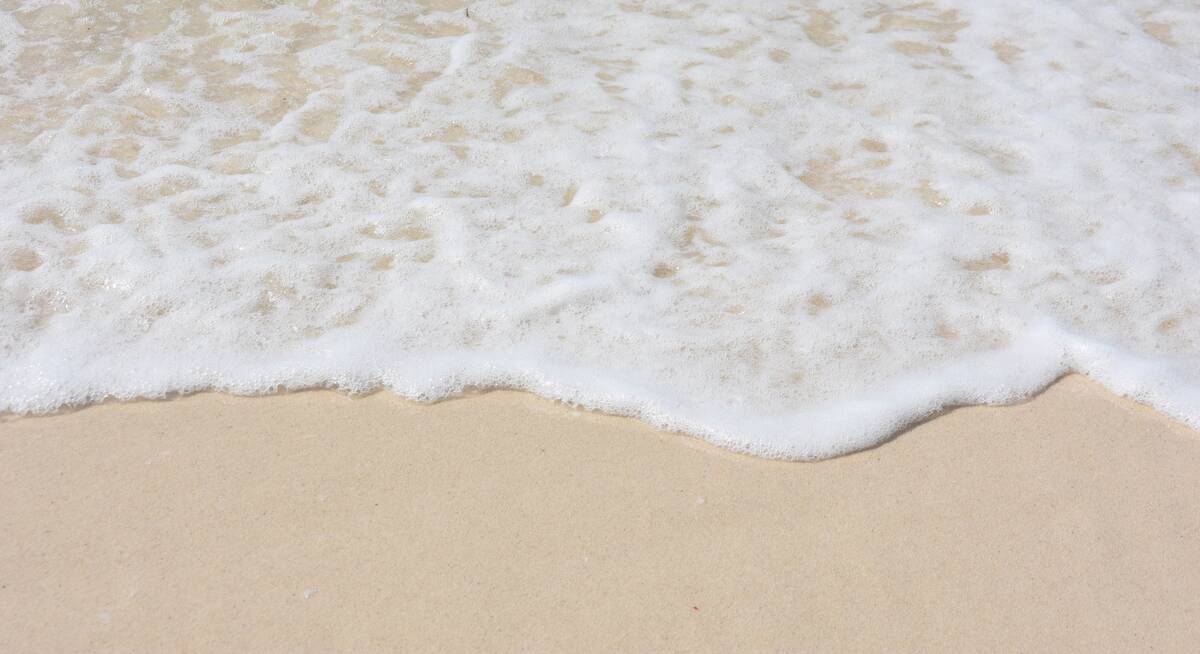
Peponi Beach Holiday
5 days • 1 locations
NAIROBI AIRPORT TO NAIROBI AIRPORT
Discover the Swahili culture of the Kenyan coast from the remote area of Lamu during this chilled out, down-to-earth and atmospheric week on the beach.
US$2,090 - US$2,090 per person

Elephant Safari
10 days • 3 locations
NAIROBI AIRPORT TO NAIROBI AIRPORT
This example of a mid-range Kenya safari and beach trip explores the wildlife of Tsavo West's volcanic plains and woodlands, Tsavo East's immense plains and the white-sand beaches and lush environment of Diani Beach.
US$5,870 - US$6,300 per person
Most recent reviews of our beach holidays to Kenya Coast
Click below to browse all 94 reviews from Kenya Coast. All from our travellers; all are in full & unedited.
Arrived 22 Feb 2025, 9 nights
"My Feb 2025 trip"
Overall rating: Excellent
Arrived 18 Feb 2025, 9 nights
"My Feb 2025 trip"
Overall rating: Excellent
Arrived 2 Feb 2025, 5 nights
"My Feb 2025 trip"
Overall rating: Excellent
Arrived 31 Jan 2025, 12 nights
"My Jan 2025 trip"
Overall rating: Excellent
Arrived 27 Jan 2025, 3 nights
"My Jan 2025 trip"
Overall rating: Good
Arrived 9 Jan 2025, 18 nights
"My Jan 2025 trip"
Overall rating: Excellent
Arrived 5 Jan 2025, 11 nights
"My Jan 2025 trip"
Overall rating: Excellent
Arrived 31 Oct 2024, 12 nights
"My Oct 2024 trip"
Overall rating: Excellent
Arrived 27 Oct 2024, 7 nights
"Kenya 2024 "
Overall rating: Excellent
Arrived 24 Oct 2024, 10 nights
"Our 40th bday trip"
Overall rating: Excellent
Where to stay in Kenya Coast
Our suggestions for beach lodges in Kenya Coast
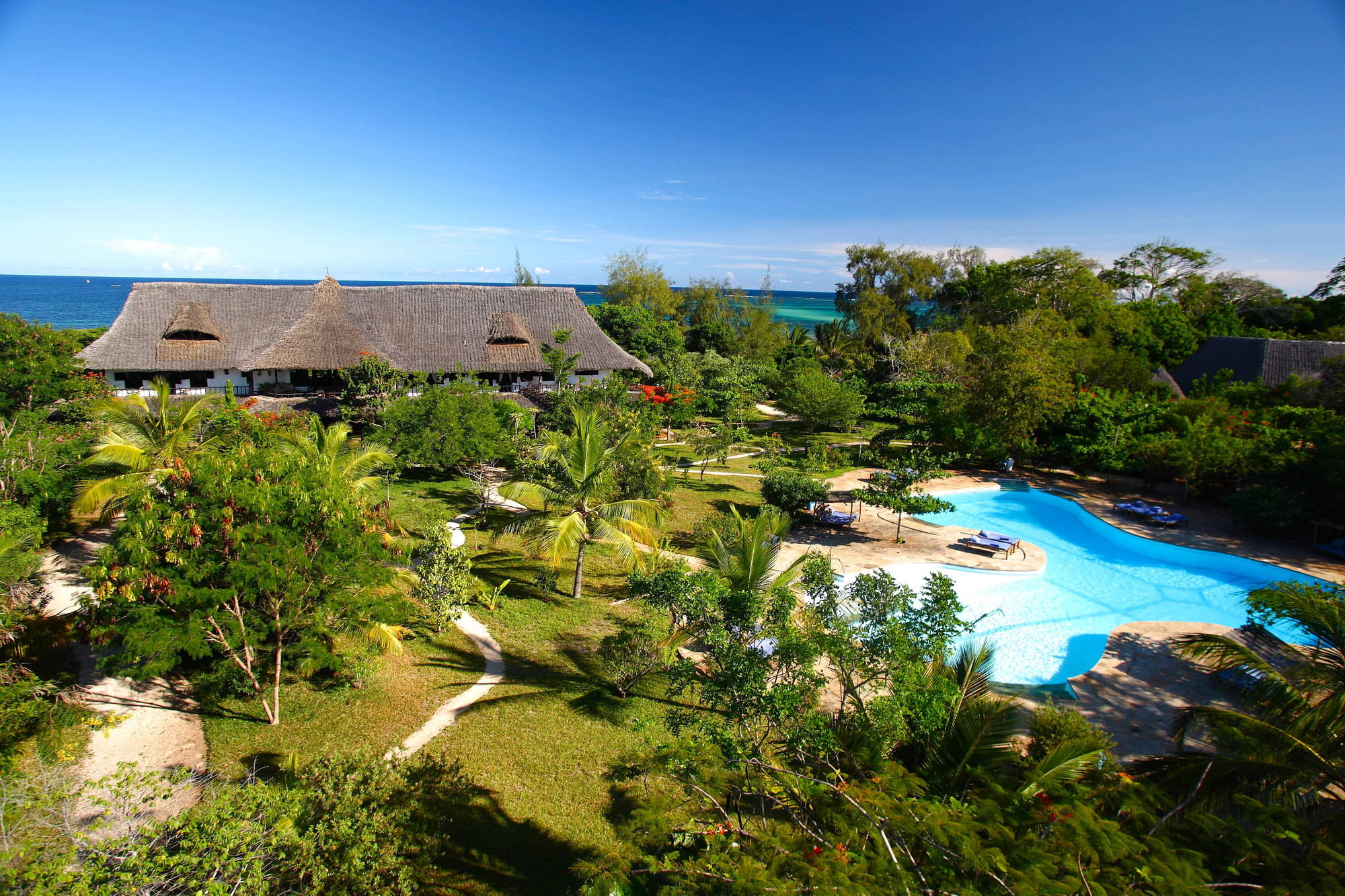
Kinondo Kwetu
Kinondo Kwetu is a small, owner-run, all-inclusive boutique lodge of exceptional quality situated on a remote stretch of beach south of the busier Diani Beach area.
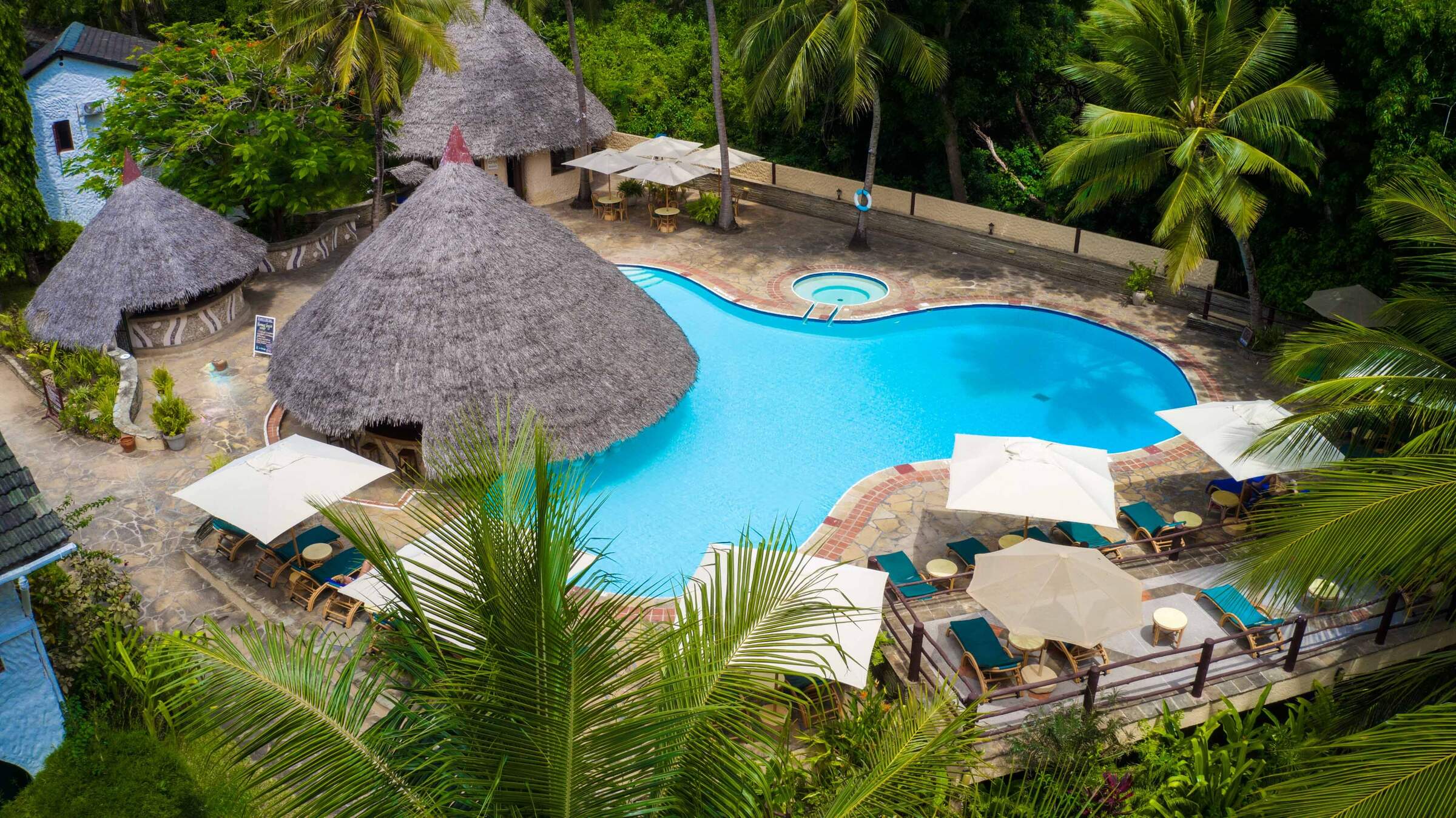
Pinewood Beach Resort
Pinewood Beach Resort is a relaxed resort-style hotel at the far south end of Diani Beach - an area known as Galu Beach.
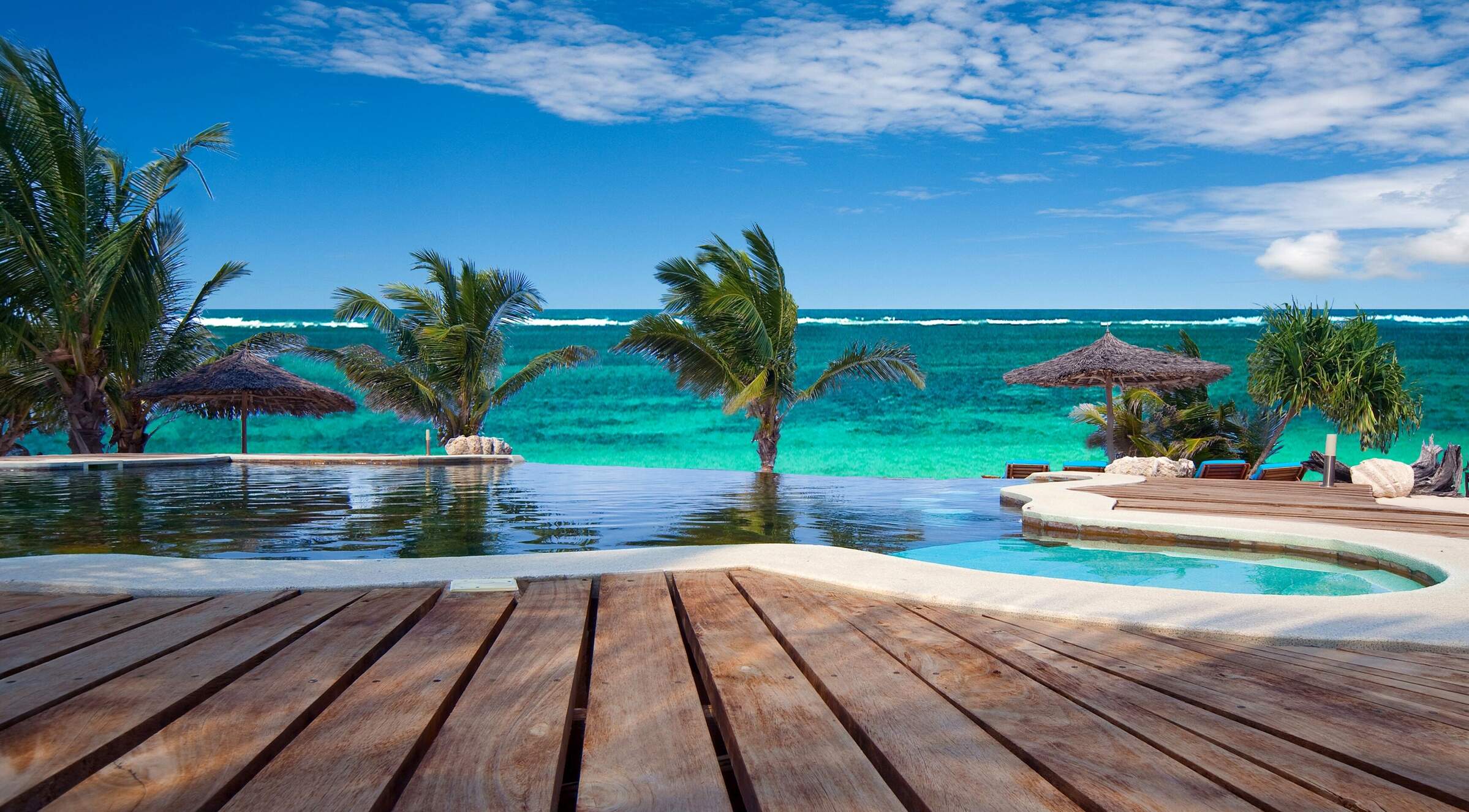
Water Lovers
Water Lovers is a popular, low-key beach hotel in a central location on Diani Beach on the south coast of Kenya.
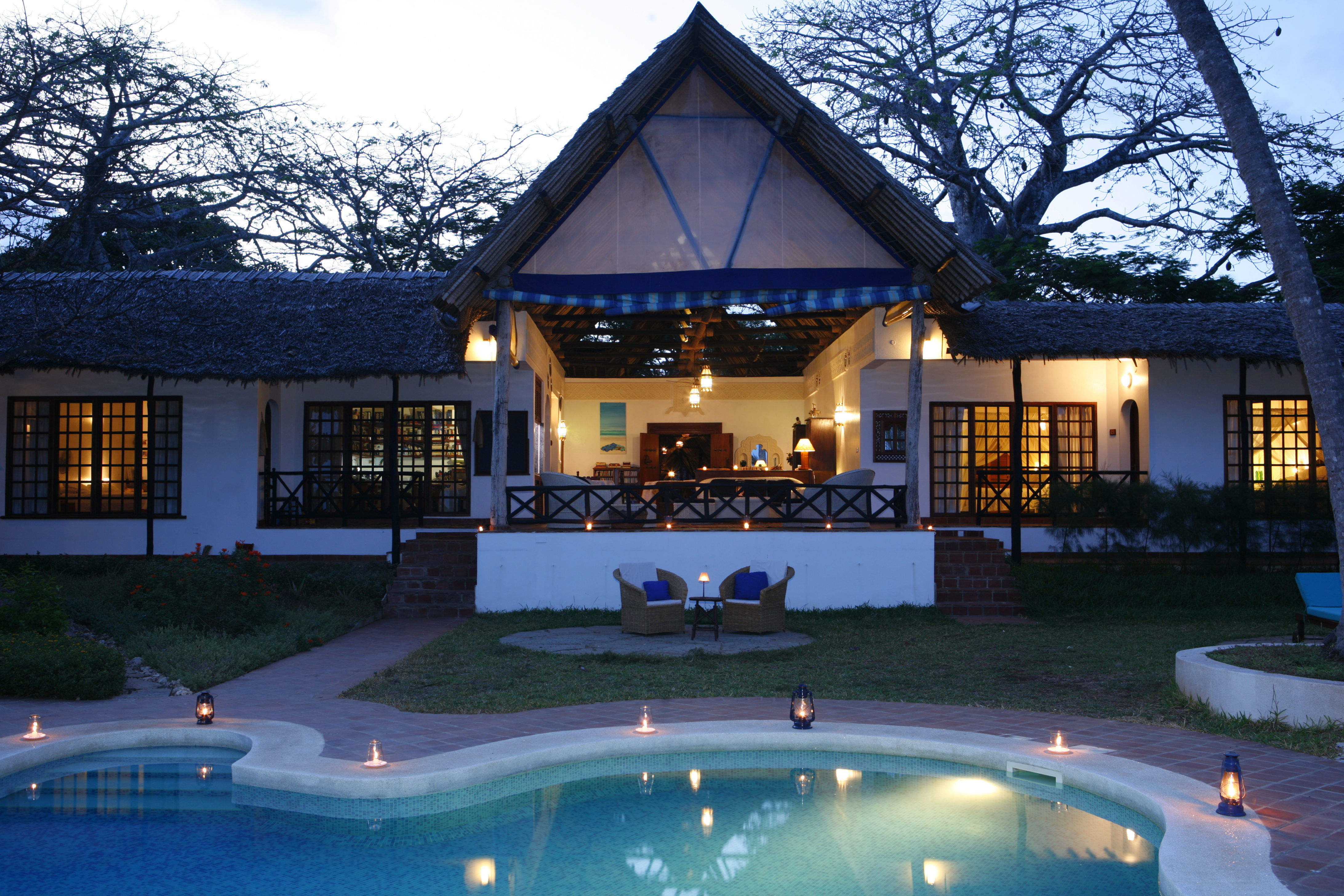
Asha Boutique Hotel
Diani Blue is a low-key but stylishly comfortable small guesthouse, with high levels of service, in a busy, central part of Diani Beach.
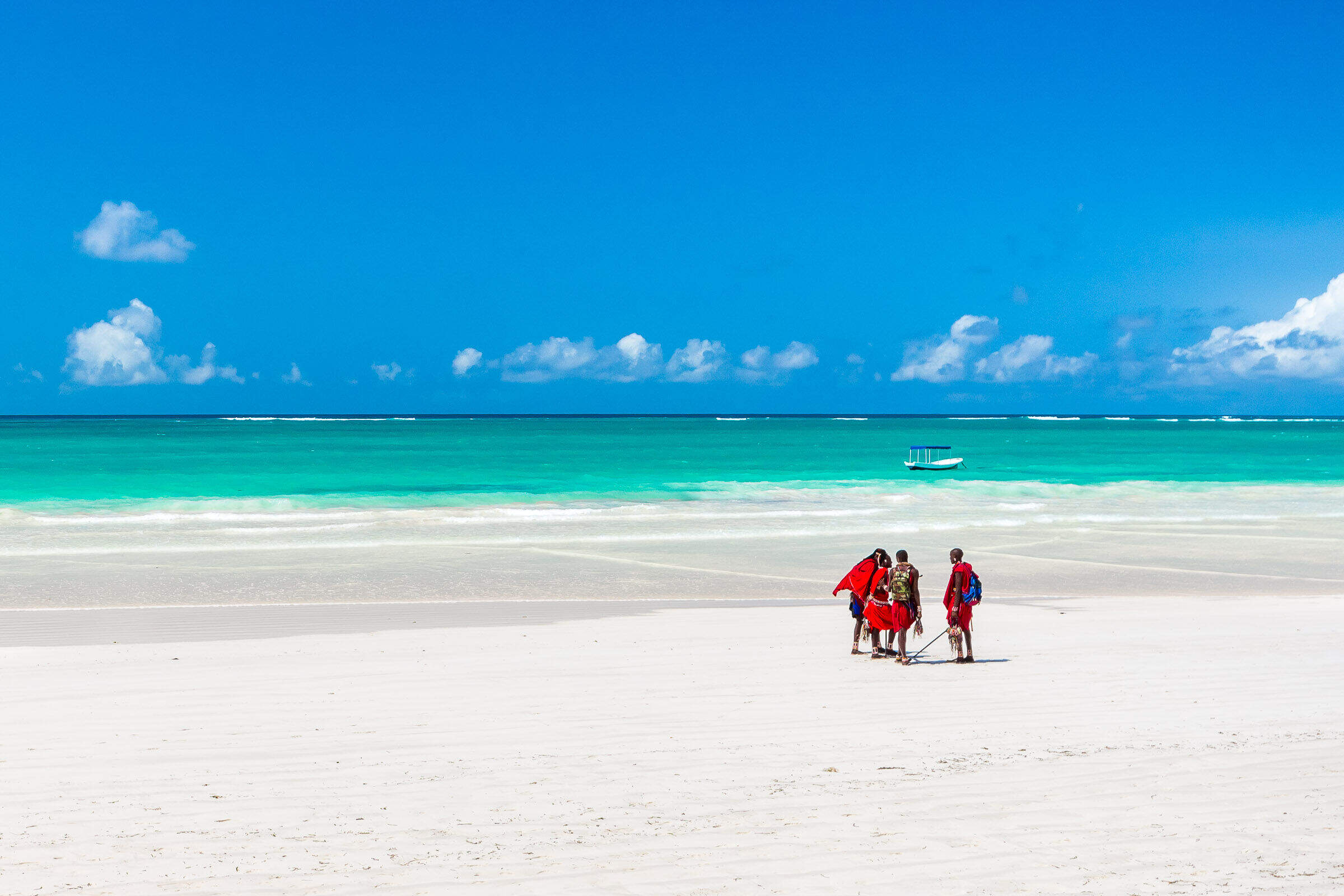
The Sands At Nomad
The Sands At Nomad is a good-value, laidback, family friendly resort with lots of Swahili character.
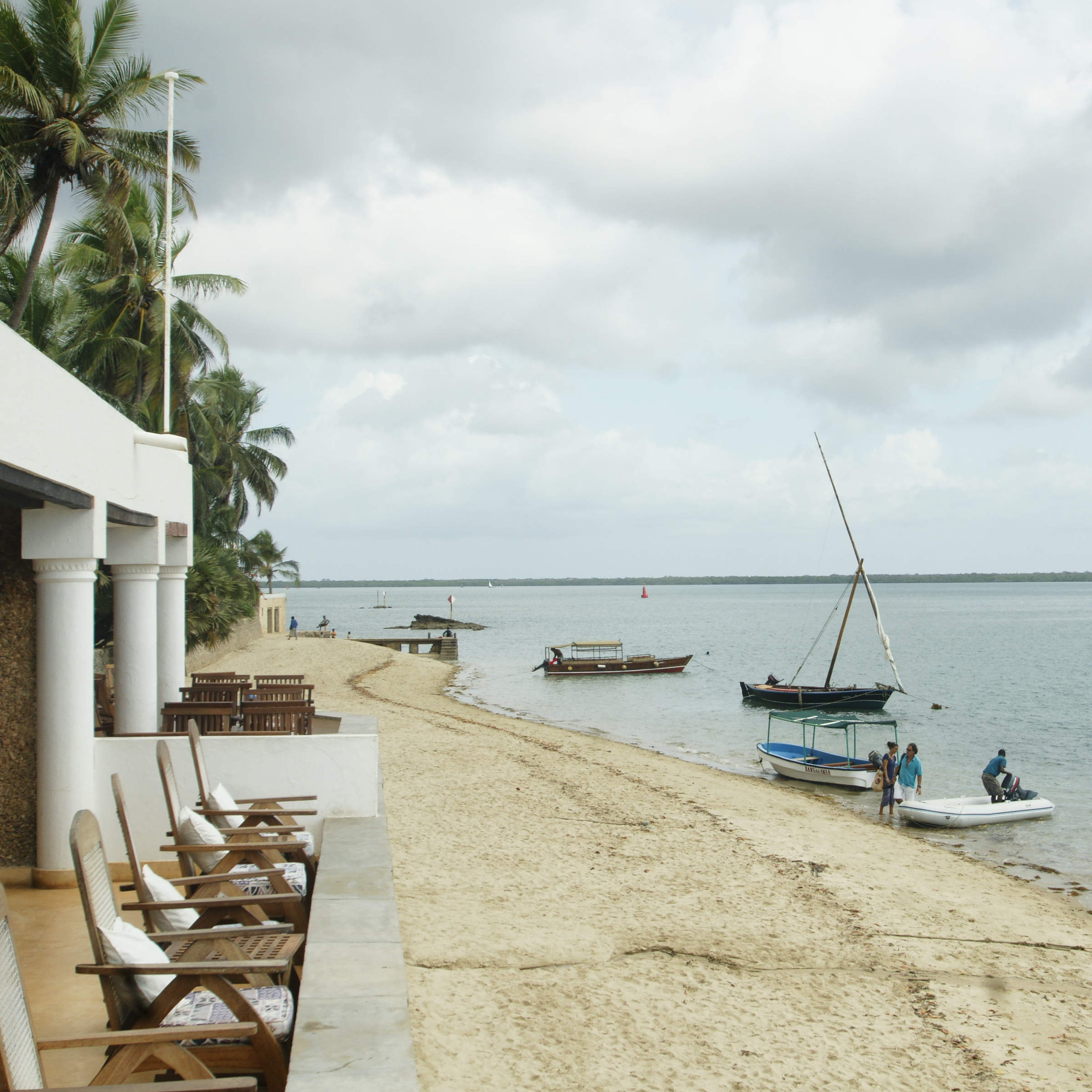
Peponi
Peponi is a long-established beach hotel, renowned for its good food, located in the village of Shela on the south side of Lamu island.
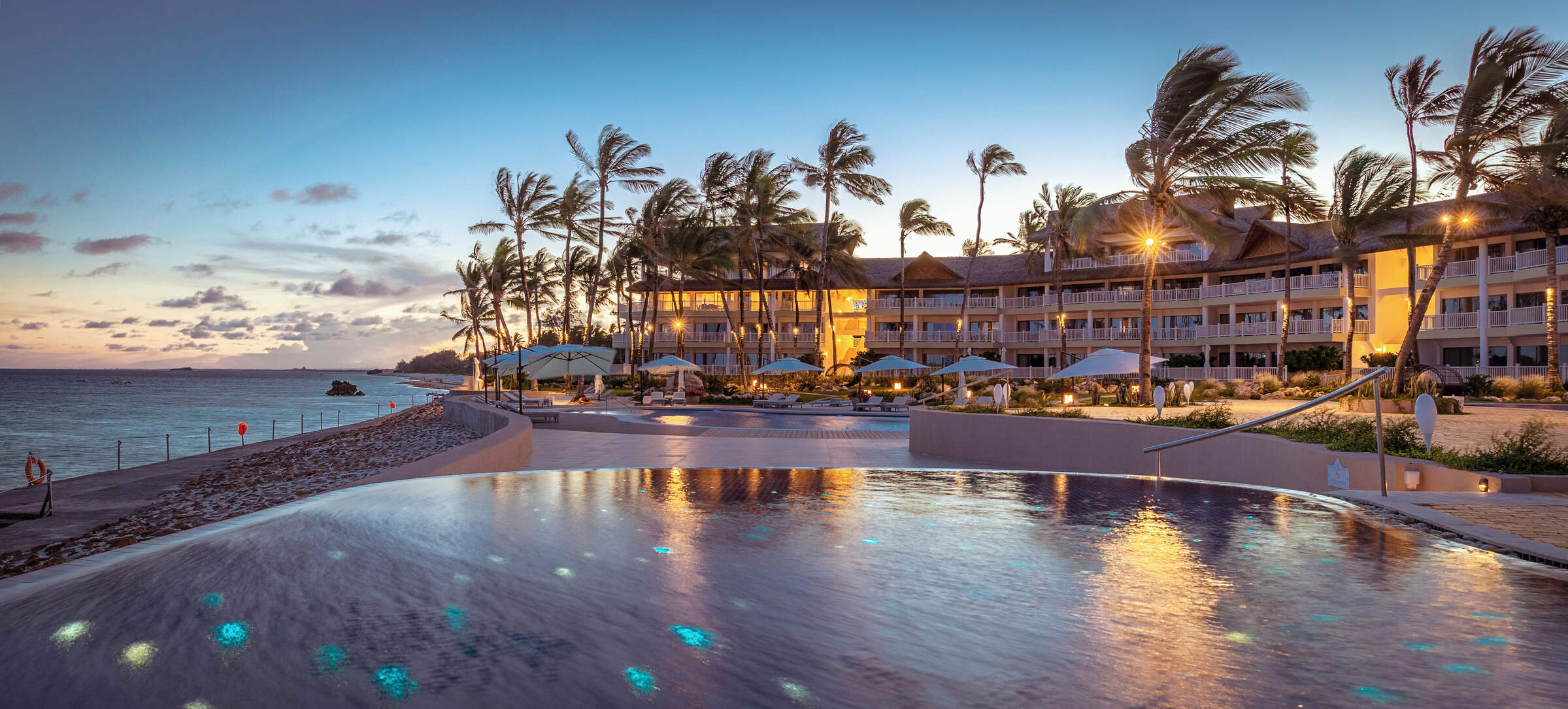
Hemingways Watamu
Long-established resort hotel with a strong British following and a good reputation for deep-sea fishing.
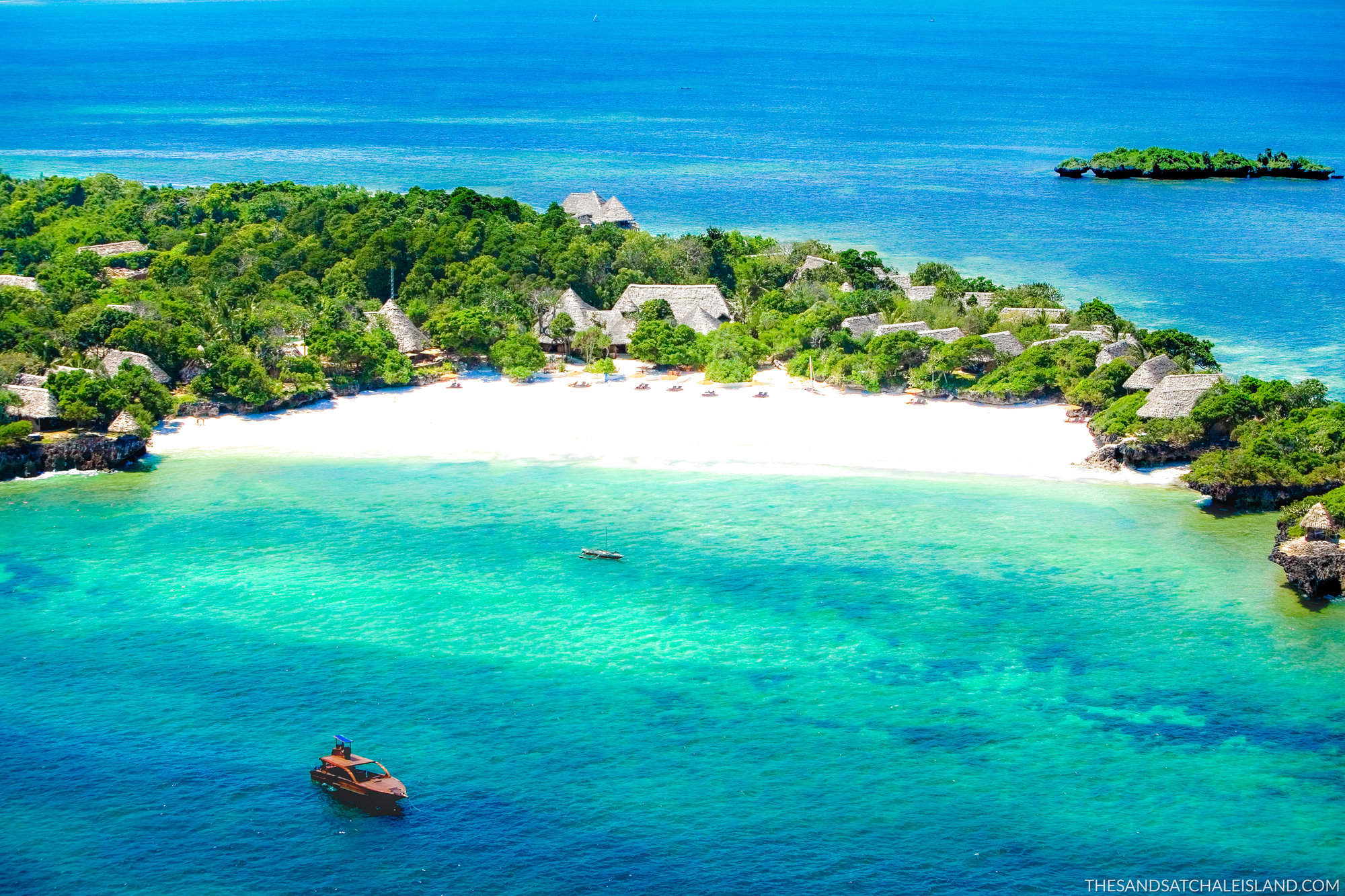
The Sands at Chale Island
The Sands at Chale Island is a beach resort offering plenty of activities and beautiful flora and fauna all around.
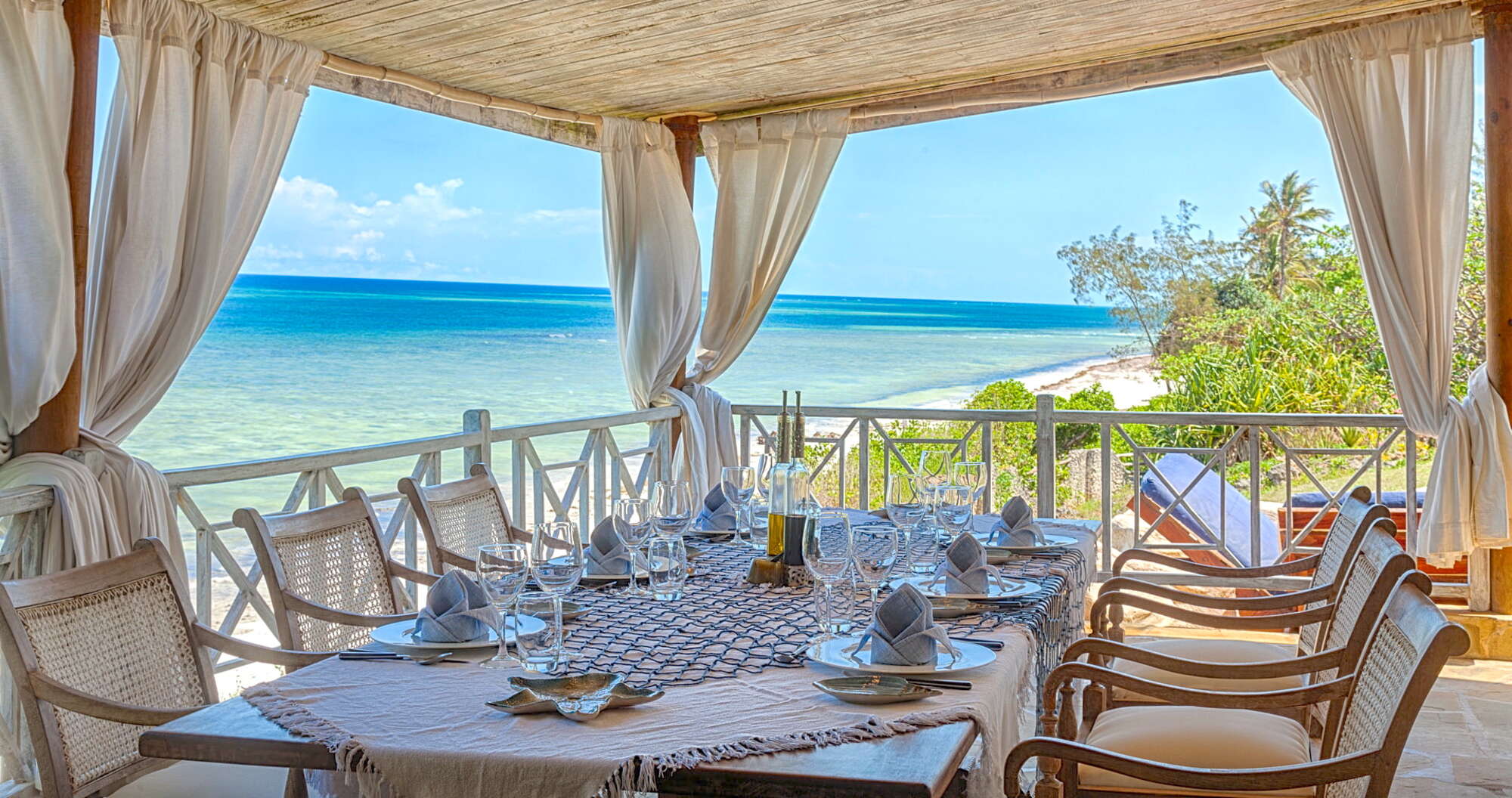
Alfajiri Villas
Alfajiri Villas is an exclusive, owner-run, hideaway property consisting of three unique villas in a central part of the north end of Diani Beach.
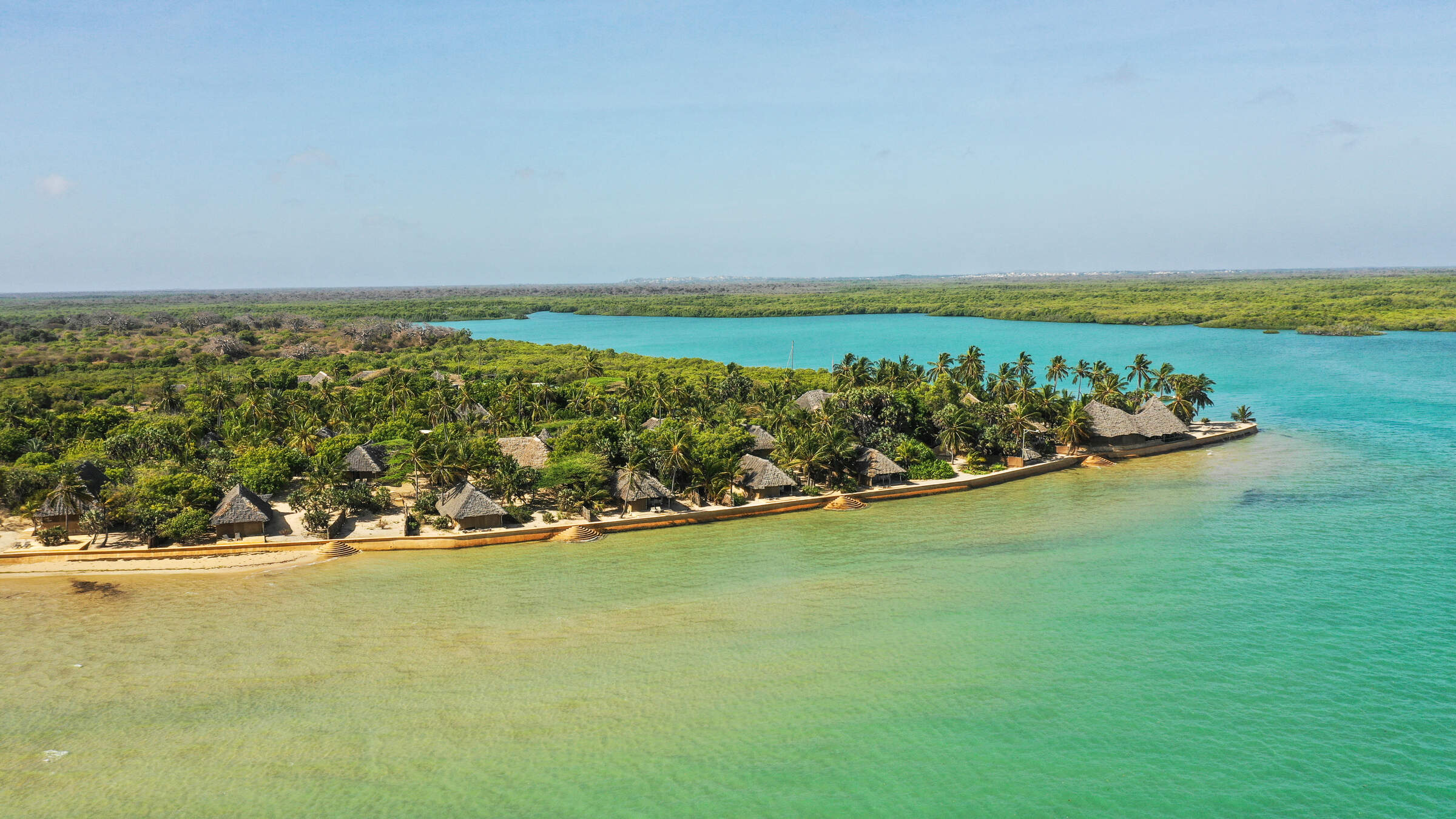
Manda Bay
Manda Bay is a luxury beach hideaway in a remote corner of an island in the Lamu archipelago, on Kenya's northern coast. It has a huge range of water sports on offer.
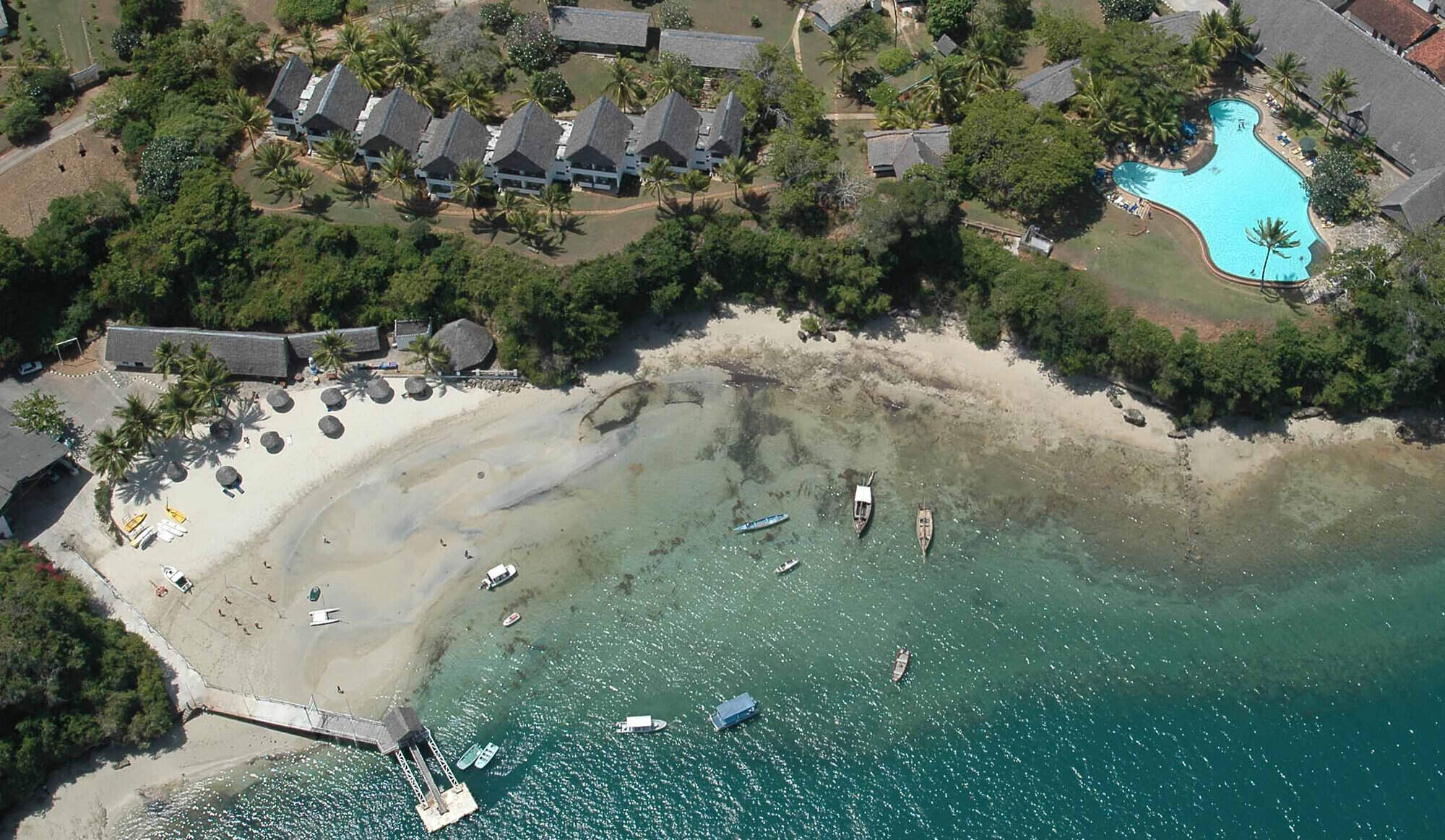
Mnarani Club
The Mnarari Club is located towards the seaward end of the beautiful Killifi Creek, and is an enduring favourite on the Kenya coast.
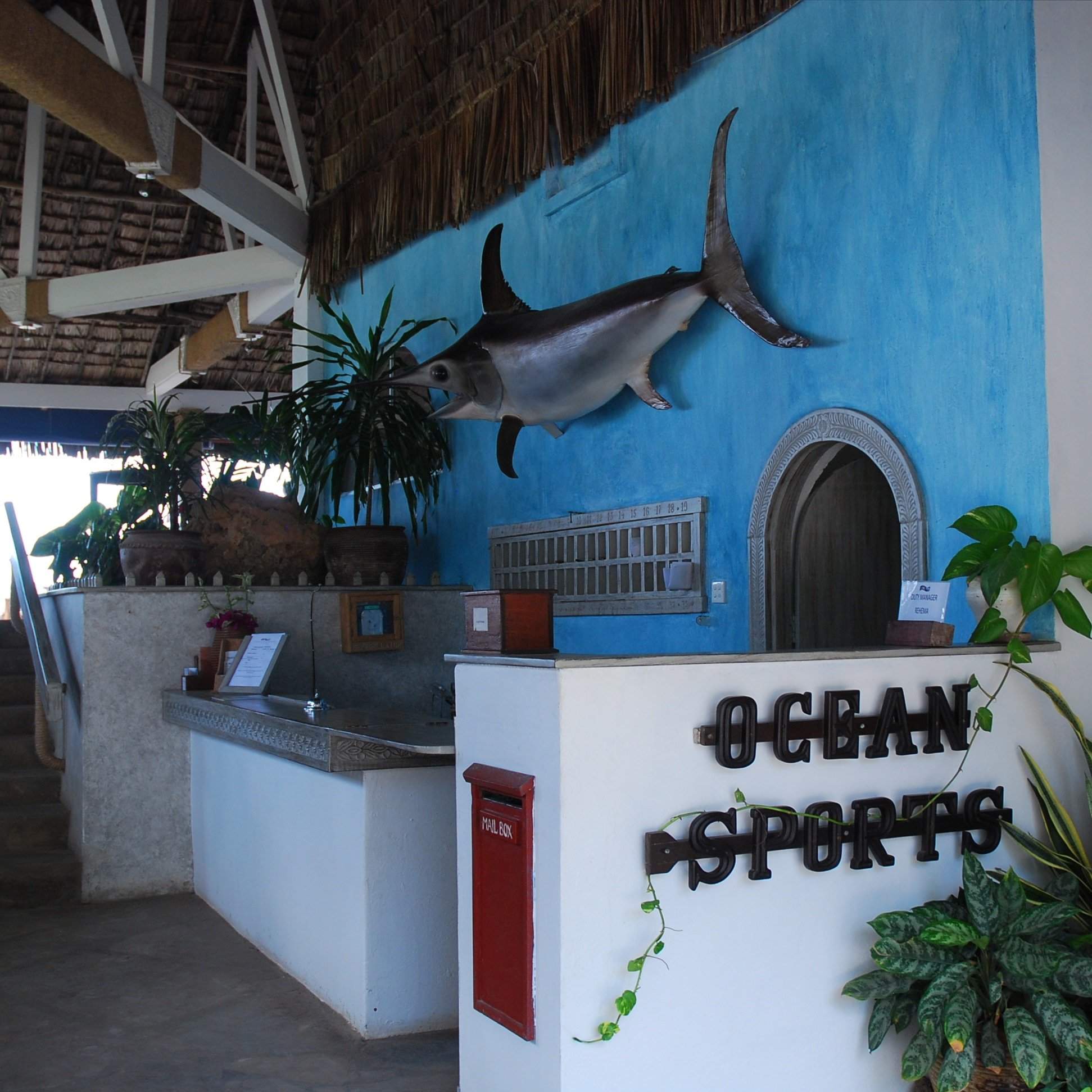
Ocean Sports
Ocean Sports is long-established and popular beach hotel right on one of Watamu's famous and beautiful bays.
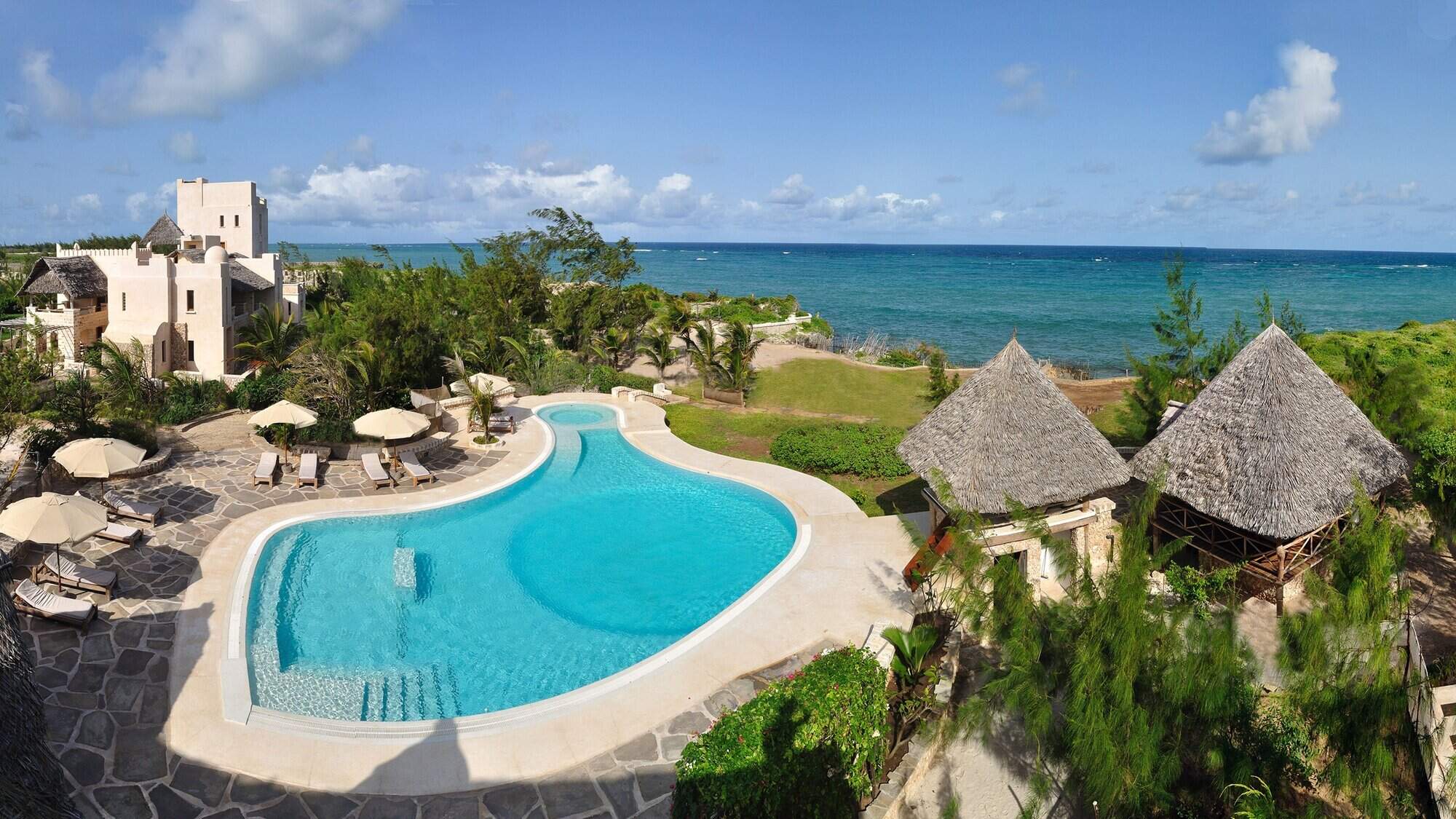
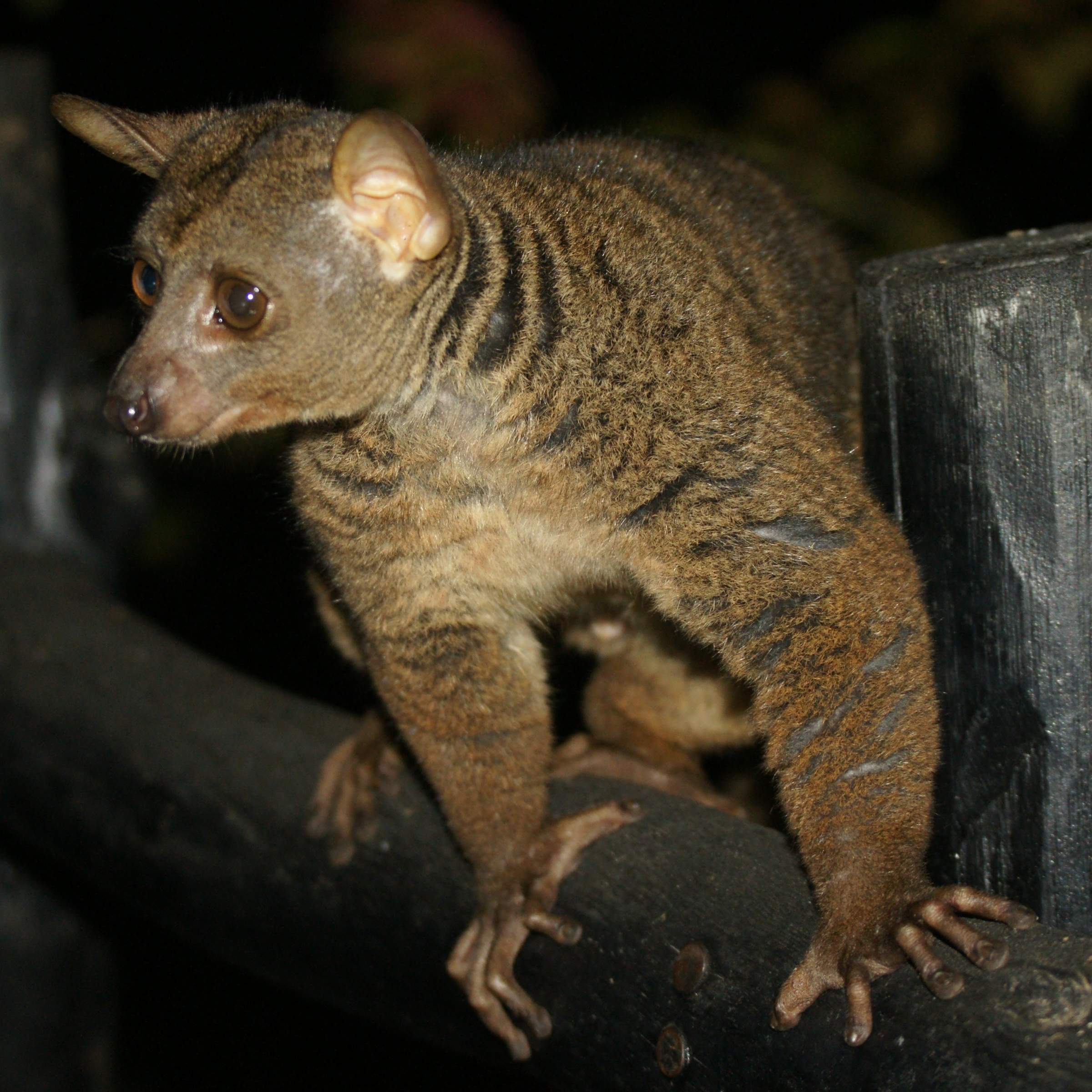
Shimba Lodge
Shimba Lodge is a picturesque tree-hotel overlooking a forest waterhole in Shimba Hills National Park, with an aerial walkway and abundant wildlife.
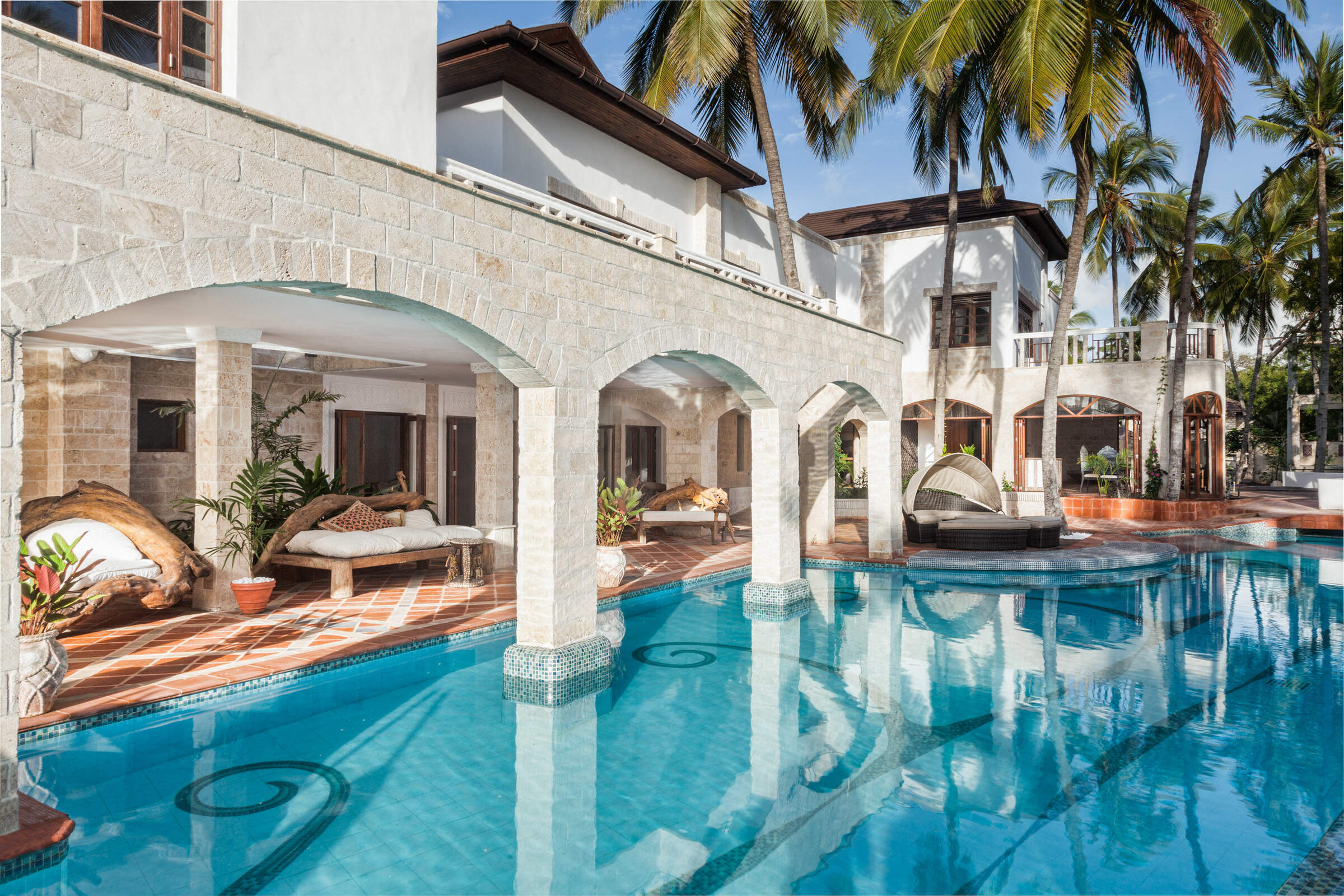
The Maji
The Maji is a small, well managed beach hotel on the northern stretch of Diani Beach in southern Kenya.
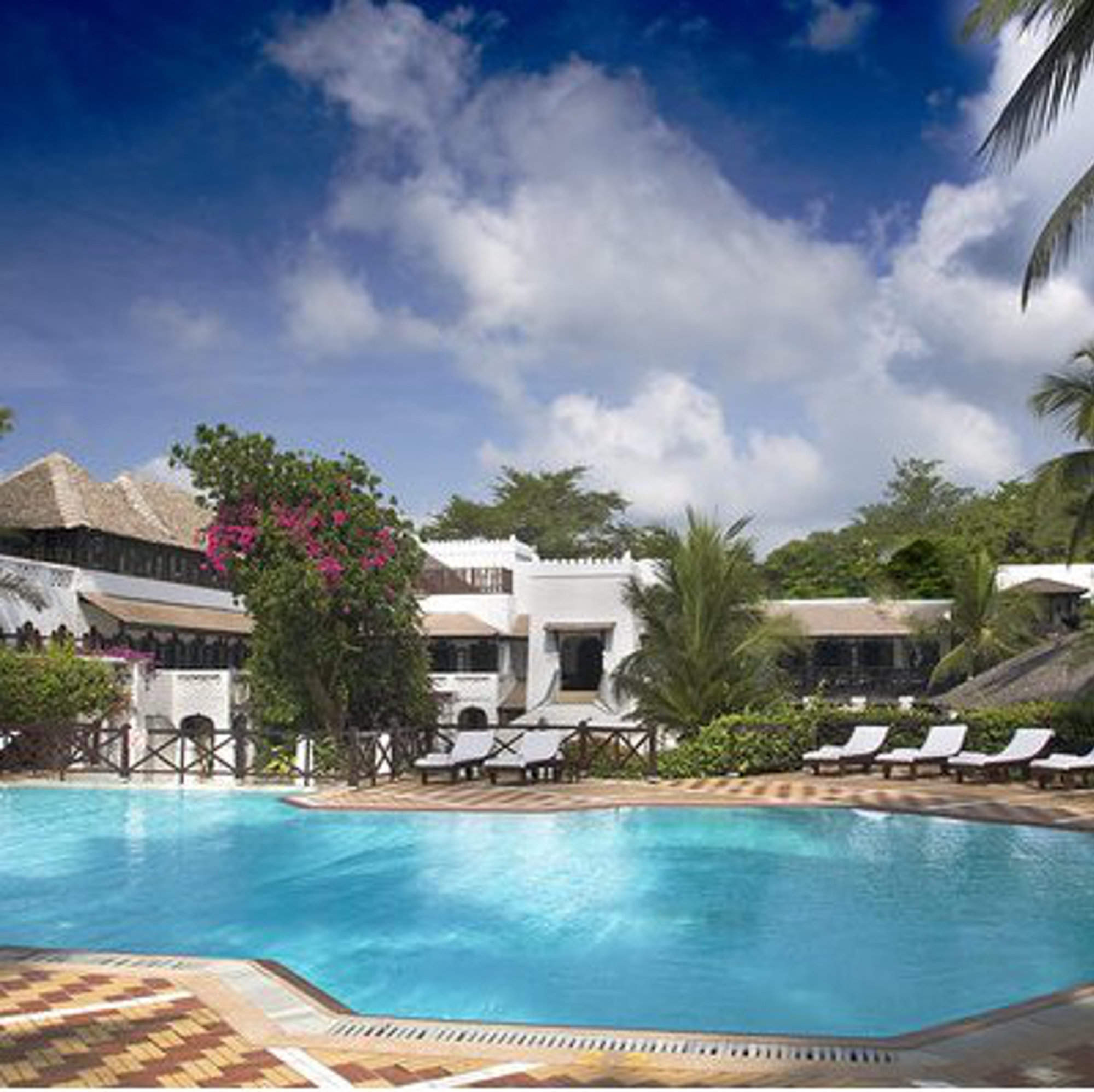
Serena Beach Resort
Serena Beach Resort is a large beach hotel on Shanzu Beach, north of Mombasa town, on Kenya's Indian Ocean coast.
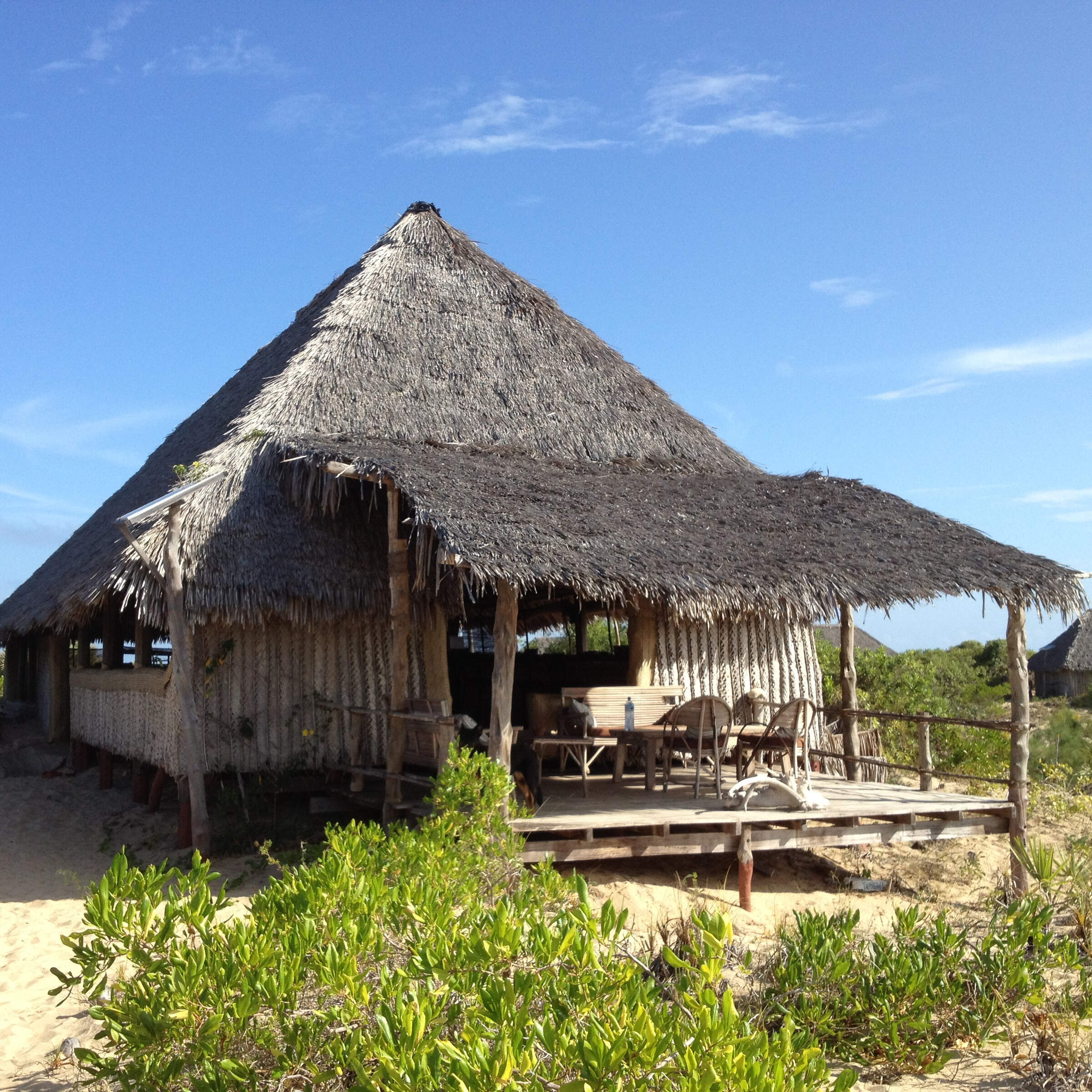
Kizingo
Kizingo is an owner-managed, rustic, barefoot beach lodge on the southwest tip of Lamu island.
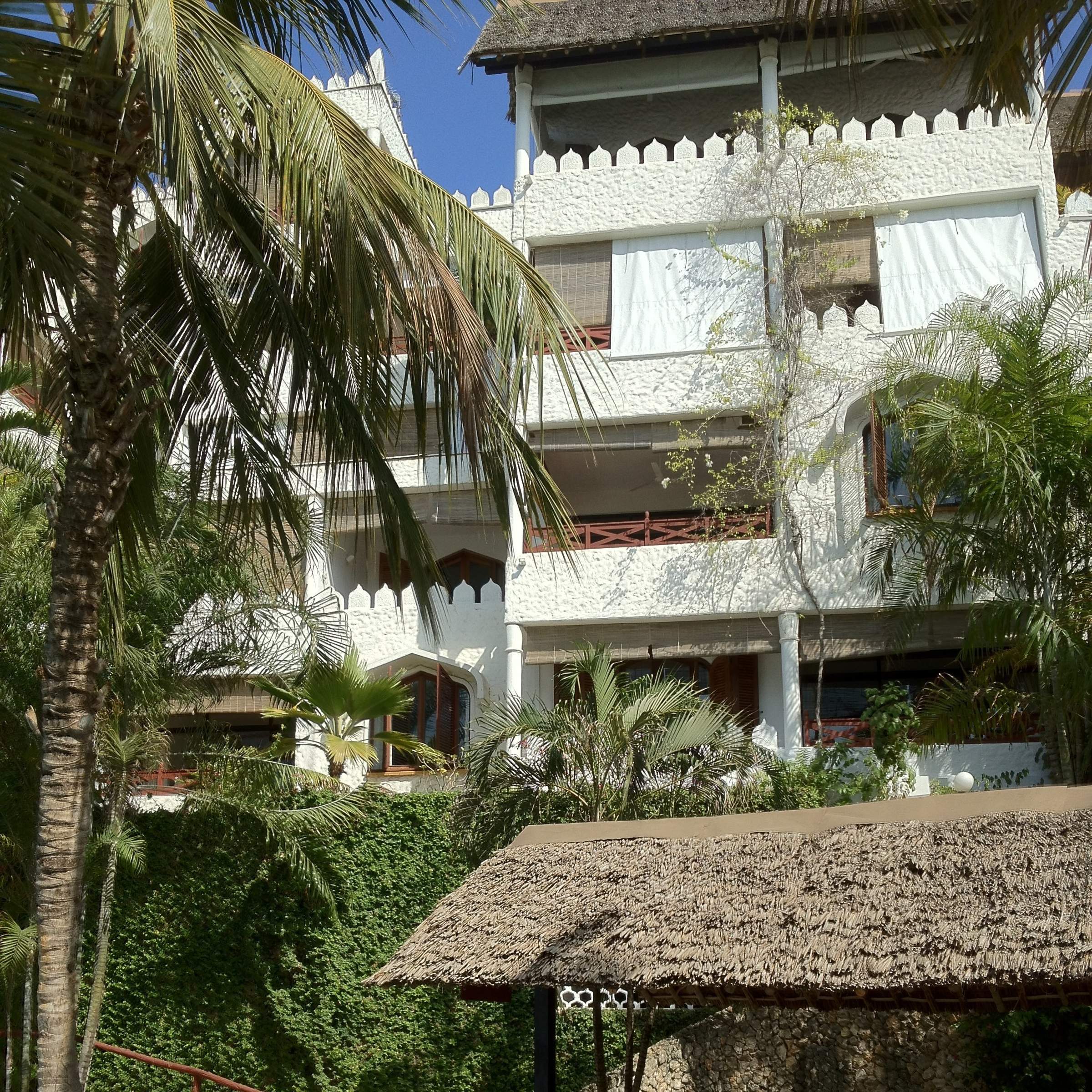
Tamarind Village
Tamaarind Village is a well managed apartment complex close to Mombasa city, with excellent restaurants, pools and visitor services.
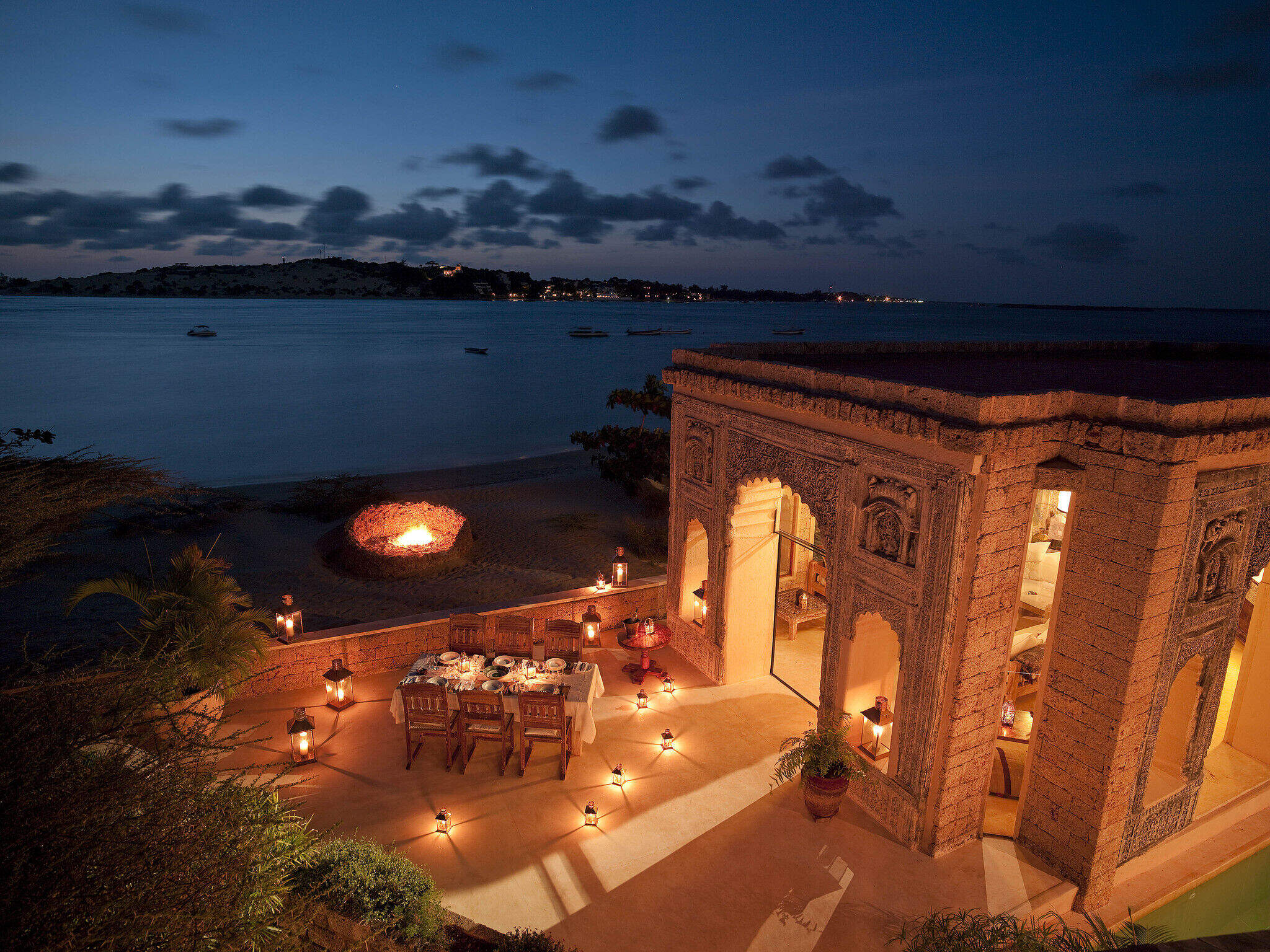
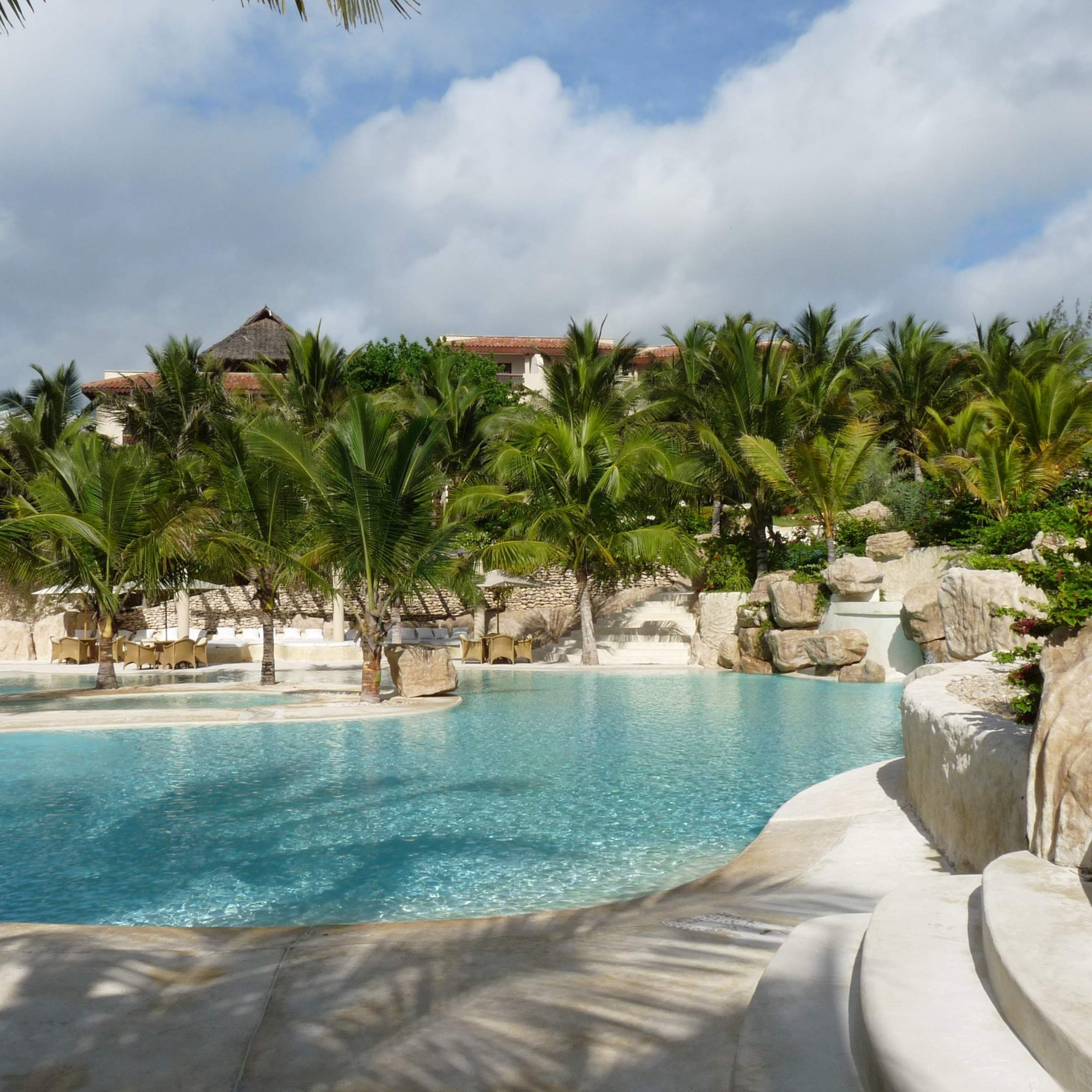
Swahili Beach
Swahili Beach is one of the biggest resort hotels on Diani Beach, with a spectacular lobby and cascading swimming pool.

Msambweni Beach House
Msambweni Beach House is a secluded and luxurious boutique hotel on the southern Kenya coast, south of Diani Beach.
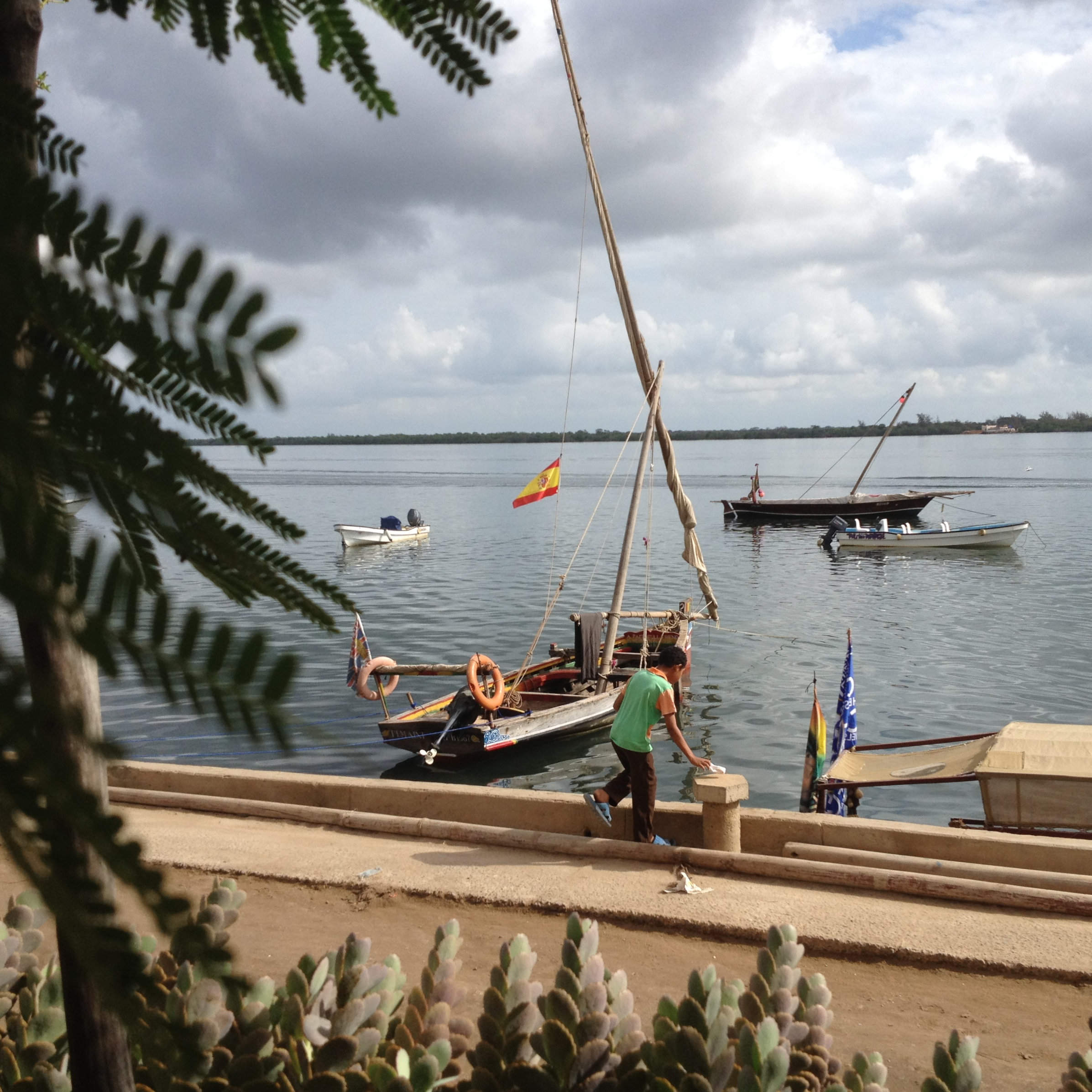
Lamu House
Lamu House is a boutique hotel on the waterfront in Lamu town, with a swimming pool, bar and terrace restaurant.
When to go to Kenya Coast
Our month by month guide: What it's like to visit Kenya Coast in Kenya
Jan
Feb
Mar
Apr
May
Jun
Jul
Aug
Sep
Oct
Nov
Dec
Kenya in January
Clear, hot days and warm nights make this high season a popular time for safaris and it’s also good for diving and snorkelling as water clarity is excellent and gets better as the dry season progresses. Most lodges and tented camps treat January after the New Year week is over, as mid-season, making it a good compromise in terms of value for money with reasonably reliable, dry weather and some greenery left in the landscape.
Expert Africa bases its description of climate and weather in January, like the other months of the year, on the climate records of roughly the last 100 years, and it's fair to say that the weather and seasons since the beginning of this century have been highly irregular and unpredictable.
- On average, January is the second driest month of the year
- Elephants dig waterholes in the dry riverbed in the Samburu reserve.
- Wildebeest and many antelope have their calving season, to February.
- Migrant birds are seen in huge numbers, especially in the Rift Valley.
- Sea water clarity around the coral reefs generally good.
Our view
Fantastic: the very best time to visit
Weather in January
Kenya in February
With the short dry season well established, the grass grazed down and wildlife gathering close to water points, this is still a good time for a safari. Good water clarity in the Indian Ocean's coastal waters makes for excellent diving and snorkelling conditions.
Expert Africa bases its description of climate and weather in February, like the other months of the year, on the climate records of roughly the last 100 years, and it's fair to say that the weather and seasons since the beginning of this century have been highly irregular and unpredictable.
- On average, February is the driest month of the year.
- It’s sometimes possible to swim with whale sharks at Diani Beach.
- Migrant birds are still seen everywhere, especially near water.
- This is usually peak calving season for wildebeest and many antelopes.
- This month is often the hottest of the year, especially on the coast.
Our view
A very good time to visit
Weather in February
Kenya in March
Hot, increasingly humid weather – with good diving and snorkelling conditions at the start of the month – gives way to rains and lower accommodation costs. Expert Africa bases its description of climate and weather in March, like the other months of the year, on the climate records of roughly the last 100 years, and predicting the seasons since the beginning of this century has been difficult.
March is the month when – traditionally – intensely hot conditions build up until a cloudburst finally happens at the end of the month or in early April, to relieve the humidity. As ever, regional variations across the country can greatly impact on visitors' experiences.
- Sea-water clarity is best for diving before the long rains start.
- Visitor numbers are low, though the Easter holidays can be busier.
- Night skies can be scintillatingly clear in early March.
- Cropped down savannah grasses can make it easier to see the wildlife.
- Temperartures climb high, especially at lower elevations.
Our view
A good time to visit, with pros & cons
Weather in March
Kenya in April
April sees the full onset of the southeast monsoon wind or kusi, which heralds the long rains. Temperatures drop soon after the rains are established and you’ll often have facilities largely to yourself in this more affordable low season, sometimes known as the "green season". The bush quickly springs to life, with greenery sprouting almost before your eyes. While you're likely to get a fair number of heavy showers, the breaks in the rain can yield sparklingly clear conditions.
With the dust settled and bright sun piercing the clouds, conditions can be sublime for photography, especially first thing in the morning or in the late afternoon with another storm brewing. You may be lucky, or you may find conditions very wet and muddy.
- A wet month, the coast often gets more than 300mm (12in) of rain.
- Sunny spells can provide great light for photography.
- Buffalo and zebra calving season often happens in this month.
- Baby crocodiles hatch, for example on Central Island in Lake Turkana.
- Palearctic migrant birds gather to fly north to breeding grounds.
Our view
A time to avoid if possible
Weather in April
Kenya in May
While game viewing can be trickier as vegetation runs riot, between the cloudbursts the colours and light are great for photography at this time of year. Expert Africa bases its description of climate and weather in May, like the other months of the year, on the climate records of roughly the last 100 years, and while it's reasonable to expect heavy rains in many parts during this month, especially on the coast, the rains don't always come evenly or in some areas come at all.
In an El Niño year, the so-called long rains that normally are established across much of the country by May can be meagre, to the despair of farmers. On the other hand in a La Niña year, the long rains can bring floods. On the coast, the monsoon winds make the climate much more predictable, with heavy rains common throughout this month.
- Frogs breed in the ponds in the Arabuko Sokoke Forest near Watamu.
- Wildebeest, impala and other grazers are in rut (the breeding season).
- Kilimanjaro looks its best as heavy rain falls as snow on the summit.
- There's a sharp peek of rainfall on the coast with many rainy days.
- Accommodation prices are uniformly low, while some camps close.
Our view
A time to avoid if possible
Weather in May
Kenya in June
The rains give way to cloudy, cooler weather, often making for comfortable conditions by the end of the month, especially in the highlands. Starting from mid-June or the beginning of July and running until the end of October, this is the high season, and accordingly has higher accommodation rates and – at least until early September – higher numbers of visitors.
While the early part of June can often be rainy on the coast, it can be a great time to go on safari, with fresh greenery, many young animals and good photographic conditions with clear air.
- The Taru Desert, inland from the coast, is carpeted with flowers.
- The Lake Turkana Cultural Festival is held in Loiyangalani.
- Madaraka Day (commemorating self rule) is 1 June.
- The annual Lewa marathon runs a course through the wildlife.
- The Diani Rules "sports" event rips up the rulebook at Diani Beach.
Our view
A good time to visit, with pros & cons
Weather in June
Kenya in July
Kenya’s “winter" season sets in (winter is a misnomer but locals feel the change), and the highlands can be rather grey. Skies are often cloudy and the days can be surprisingly cool, with an average daytime high in many highland safari areas of 15-20°C and night-time temperatures dropping below 10°C in Nairobi and the highlands. Lower parts of the country and the coast are usually warm and dry, typically reaching highs of around 25°C with lows in the high teens.
As this is the start of the high season, coinciding with the usual arrival of the wildebeest migration in the Maasai Mara, July is a busy month. Ask your Expert Africa specialist to advise on how to avoid the crowds, which is not that difficult to do.
- The wildebeest migration usually reaches the Maasai Mara in July.
- Simbi Lake (Kisumu) and Crater Lake (Naivasha) can attract flamingoes.
- Watersports start to pick up and some surfing is possible at Malindi.
- Afternoon thunderstorms are a common feature in the Maasai Mara.
- The sea can be choppy along the coast, making diving difficult.
Our view
A good time to visit, with pros & cons
Weather in July
Kenya in August
The Great Migration fills the plains of the Maasai Mara, and school’s out, so the park roads are full of tourists – ask your Expert Africa specialist for advice on crowd avoidance tactics. Choose a private conservancy rather than a public national park or national reserve for quieter conditions.
Like July, August is generally mild and relatively dry in the safari areas, but it can be very chilly in the highlands, even in the middle of the day, and hail occasionally falls above altitudes of around 2,400m (8,000ft). Nairobi can be disappointingly overcast, with low cloud.
- Apart from Christmas holidays, this is the busiest month of the year.
- Late August sees peak wildebeest drama at the Mara River crossings.
- Coastal winds are good for kite- and wind-surfing.
- Few mosquitoes are around at this generally dry time of year.
- The annual Camel Derby takes place in the Samburu capital, Maralal.
Our view
A good time to visit, with pros & cons
Weather in August
Kenya in September
The skies clearing of cloud signals the start of hot, dry weather with little chance of rain – and, after the first few days of the month, far fewer visitors – making the latter part of September a good time for a quieter safari. While early September is often good for dramatic migration crossings along the Mara River, you might consider deliberately postponing your trip until later in the month, when the migration can still be very impressive and visitor numbers fewer.
If tourist surges are somewhat predictable, however, the patterns of the wildebeest migration are more volatile, and like all of Expert Africa's climate and weather assessments, they are based on accumulated years of experience rather than guaranteed certainty.
- This is still high season, with prices to match.
- Many river crossings take place on the Mara river in both directions.
- Natural bush fires flush out insects and small animals for predators.
- The Rift Valley Music Festival takes place by Lake Naivasha.
- With school holidays over by early September, late-month is quieter.
Our view
Fantastic: the very best time to visit
Weather in September
Kenya in October
Still hot, mostly dry and not too busy, this is many people’s preferred month for a safari, and it’s also good for diving and snorkelling. The wildebeest and zebra herds of the great migration are often still to be seen, though in dwindling numbers. The swamps of Amboseli attract thirsty wildlife including large herds of elephants.
While we wouldn't expect much rain across most of the country this month, the climate has become so unpredictable that you can never say never, and the possibiity of the short rains – usually associated with November to mid-December, starting early, can't be discounted.
- This month sees the tail end of the great migration in the Mara.
- Palearctic migrant birds start to arrive, staying until March.
- Turtle nests hatch at Watamu, until November.
- Amboseli elephants focus on the swamps for their daily water.
- The Indian Ocean monsoon winds turn from southeast to northeast.
Our view
A very good time to visit
Weather in October
Kenya in November
The northeast monsoon wind or kaskazi heralds the start of the “short rains", usually some time in the second half of the month. From November to mid-December, this is the low season, and accordingly has lower accommodation rates and lower visitor numbers. Across most of the country you can expect warm, somewhat cloudy weather, with occasional heavy showers and localised flooding.
Expert Africa bases its description of the climate in November, like the other months of the year, on the records of roughly the last 100 years, and it's fair to say that the seasons since the beginning of this century have been highly irregular and unpredictable: some years the short rains don't come at all, or don't reach every part of the country. In an El Niño year, the November short rains can be very heavy, but in a La Niña year, they can fail completely.
- Swimming with dolphins in Lamu can be done from now until April.
- Birders gather at Ngulia in Tsavo West to ring Palearctic migrants.
- The Lamu Cultural Festival takes over the town and Lamu Creek.
- Agricultural shows often take place regional market towns.
- This is low season, so camps can be great value, with special offers.
Our view
A good time to visit, with pros & cons
Weather in November
Kenya in December
In a typical December, the rains usually finish by middle of the month, leaving the landscape looking its best, under clear blue skies, and heralding the start of the second peak tourist season from around 20 December to the first week of January. Our assessment of the likely weather in December, like the other months of the year, is based on climate records, and it's fair to say that the seasons since the beginning of this century have been highly irregular and unpredictable.
Christmas can sometimes be wet, but most years the rains have finished a week or two earlier, with the festive season ushering in the perfect combination of clear skies and sunshine by day and starry nights.
- Christmas and New Year are busy, with the lodges and camps full.
- Rates are highest after 24 Dec, with supplements on public holidays.
- Republic Day and Independence day are celebrated on 12 December.
- Good kite- and wind-surfing restarts, with strong northeasterly winds.
- Mango season begins, providing excitement for primates and elephants.
Our view
A good time to visit, with pros & cons
Weather in December
Kenya's coast: In detail
A guide to Kenya's coast
Kenya’s coastal climate
The Kenya coast’s geography and wildlife
If you’re looking for tropical forests, you’ll find most of Kenya’s lowland forests are concentrated just inland from the coast. As well as the kaya sacred forests, such as Kaya Kinondo along Diani Beach, if you have the time you could explore the Ramisi River Forest in the far south, near Funzi Keys, the forests of the Shimba Hills area, the Sabaki River forest north of Malindi and the coast’s largest forest, now protected as the 420km² Arabuko-Sokoke National Park, south of Malindi. The forest, which sheltered the mysterious town of Gedi for centuries, includes feathery miombo (Brachystegia) woodland (home to a diverse range of birds), glossy and dense Cynometra forest, and mixed lowland rainforest rich in plants and insects and a variety of small mammals.
While Kenya's coastal wildlife is mostly not the big-game variety (Shimba Hills National Park is an exception and is home to elephants, buffalos, giraffe, several species of antelopes and leopards), smaller mammals are widespread, with monkeys particularly common. You’ll see troops of baboons at the roadside and vervet and Sykes’ monkeys, making a nuisance of themselves in hotel gardens. In the forests at Diani Beach several troops of spectacular colobus monkeys are a big attraction; you’ll see the colo-bridges constructed by local conservationists, strung between trees from one side of the road to the other, allowing the monkeys to cross safely. If you’re visiting the atmospheric ruins of Gedi, near Watamu, look out for the rare golden-rumped elephant shrew, an extraordinary mash-up of a creature, with a sensitive proboscis and stilt-like legs, that you may see foraging through the undergrowth accompanied by a bird called the red-capped robin chat, which alerts it to danger and picks up insects in its trail.
History and culture of the Kenya coast
Over the course of the first millennium AD, Swahili society was born – still today a vibrant and complex cultural mix of African roots and imported styles; a classic Bantu language with hundreds of Arabic loan words; and a highly nuanced class structure in which claims of overseas ancestry are as critical to high-status families as they are to the ‘Norman’ aristocracy in Britain or to American descendants of the Mayflower pilgrims.
You can see the historical vestiges of Swahili culture in the fascinating ruins of Gedi, hacked out of the jungle near Watamu, and in numerous smaller ruined mosques and other sites scattered along the coast, especially in the Lamu archipelago. Swahili culture is also apparent in the black buibui gowns worn by many women (a style that arrived from Arabia in the 1930s), in the type of fishing and trading vessels used here, in food and drink and a hundred other cultural facets from music to architecture. The Kenya coast is almost entirely Muslim, but the religion has always been tolerantly interpreted here and you are unlikely to meet any attitudes more disturbing than occasional indifference to visitors. Just as around the rest of the country, the majority of people are effusively welcoming and helpful.
As well as the Swahili culture of the coastal towns and villages, there’s another coastal culture – the culture of the nine local tribes (the Mijikenda) who didn’t intermarry with foreign visitors, but stayed a little inland, based in the forest around their sacred groves, or kaya. At Diani Beach you can visit the first fully accessible kaya, Kaya Kinondo, with a knowledgeable local guide, and explore the forest world of the first coastal inhabitants, with its fascinating fauna and flora.
Safaris from the Kenya coast
Shimba Hills National Park
The hilly savannahs and rainforest of Shimba Hills National Park, just 30km inland from Diani Beach, protect Kenya’s only population of sable antelope. As well as this magnificent antelope (one of Africa’s largest, with its impressive, sweeping horns), you’ll commonly see elephants, buffaloes, fish eagles and monkeys, either on game drives or from the decks and walkways of one of the area’s rainforest lodges. Walks to Mwaluganje Elephant Sanctuary and Sheldrick Falls are both highly recommended. A night or two at Shimba Lodge or Kutazama can make a fitting finale to a safari and beach holiday.
Tsavo East National Park
Kenya’s largest national park, Tsavo East National Park, is also the closest protected savannah environment to the coast, with large populations of plains wildlife, including impressive herds of dusty, red-coloured elephants, lions and cheetahs, buffalo, hippos, and plenty of grazers from impala to zebra. Expert Africa offers very good-value safaris by road to our two recommended camps in the park, Galdessa and Satao Camp. You can go for as little as one night, though we wouldn’t recommend less than two and ideally three or four.
Map of Kenya Coast
Choices for where to stay in Kenya Coast

Kenya Coast: Beach holidays

Kinondo Kwetu Beach Holiday
7 days • 1 locations
NAIROBI AIRPORT TO NAIROBI AIRPORT
Enjoy a ‘home away from home’ on a beautiful beach, where you will be exceptionally well looked after by a superb team. This holiday can be as relaxed or as action-packed as you like.
US$4,140 - US$5,540 per person

Elephant Safari
10 days • 3 locations
NAIROBI AIRPORT TO NAIROBI AIRPORT
This example of a mid-range Kenya safari and beach trip explores the wildlife of Tsavo West's volcanic plains and woodlands, Tsavo East's immense plains and the white-sand beaches and lush environment of Diani Beach.
US$5,870 - US$6,300 per person

Peponi Beach Holiday
5 days • 1 locations
NAIROBI AIRPORT TO NAIROBI AIRPORT
Discover the Swahili culture of the Kenyan coast from the remote area of Lamu during this chilled out, down-to-earth and atmospheric week on the beach.
US$2,090 - US$2,090 per person
Top 22 beach lodges and resorts on Kenya coast
There is a large variety of accommodations on the Kenyan Coast. Listed below are our recommendations for nice places to stay. Ask us for more details of what's where, and what's likely to suit you best!

Kinondo Kwetu
Kinondo Kwetu is a small, owner-run, all-inclusive boutique lodge of exceptional quality situated on a remote stretch of beach south of the busier Diani Beach area.

Pinewood Beach Resort
Pinewood Beach Resort is a relaxed resort-style hotel at the far south end of Diani Beach - an area known as Galu Beach.

Asha Boutique Hotel
Diani Blue is a low-key but stylishly comfortable small guesthouse, with high levels of service, in a busy, central part of Diani Beach.

Water Lovers
Water Lovers is a popular, low-key beach hotel in a central location on Diani Beach on the south coast of Kenya.

The Sands At Nomad
The Sands At Nomad is a good-value, laidback, family friendly resort with lots of Swahili character.

Alfajiri Villas
Alfajiri Villas is an exclusive, owner-run, hideaway property consisting of three unique villas in a central part of the north end of Diani Beach.

Hemingways Watamu
Long-established resort hotel with a strong British following and a good reputation for deep-sea fishing.

The Sands at Chale Island
The Sands at Chale Island is a beach resort offering plenty of activities and beautiful flora and fauna all around.

Mnarani Club
The Mnarari Club is located towards the seaward end of the beautiful Killifi Creek, and is an enduring favourite on the Kenya coast.

Ocean Sports
Ocean Sports is long-established and popular beach hotel right on one of Watamu's famous and beautiful bays.

Looking for inspiration on where to travel next?
Visit our trip chooser to explore your options and find inspiration for your perfect African adventure
Inspire me

